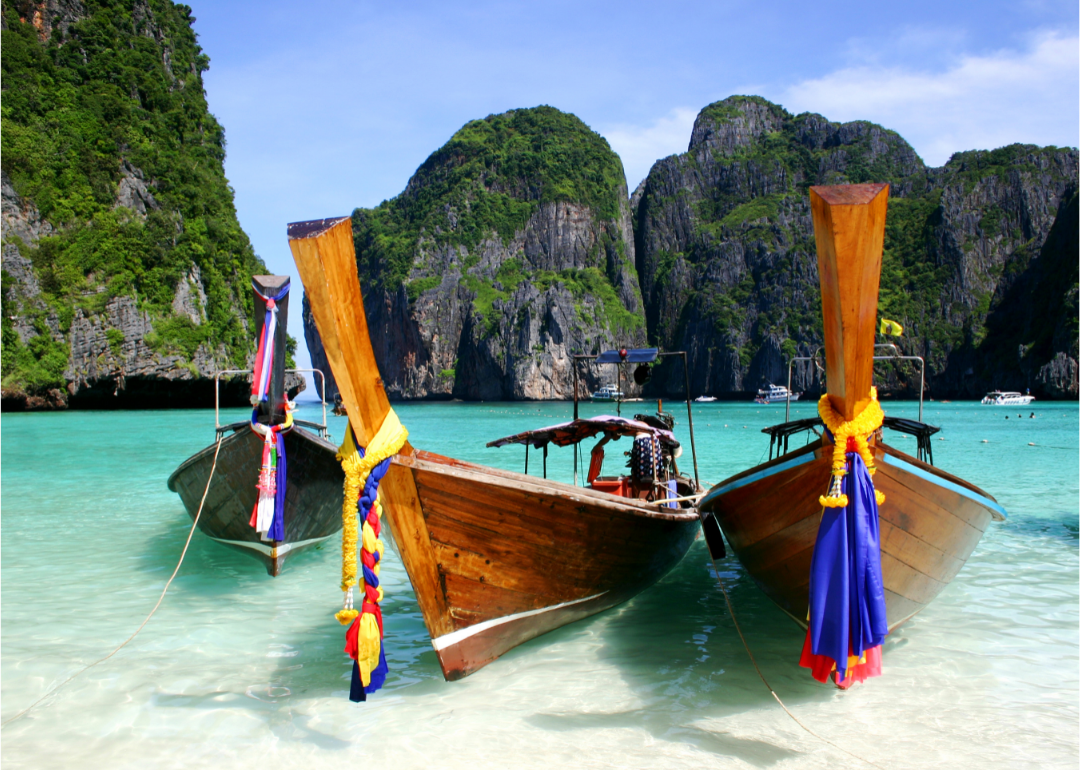
Countries most dependent on tourism
Travel to many top destinations around the world was severely curtailed or even stalled for much of 2020 as the world grappled with the coronavirus pandemic. A year later, these locations are beginning to welcome the return of visitors.
Stacker consulted the World Bank's TCdata360 database released in 2020 in order to rank the 50 countries most dependent on tourism. To make the list, countries had to be a member of the United Nations. Rankings were determined by the percentage that tourism contributes to the GDP, with all monetary values given in U.S. dollars. We've additionally layered in context around what draws tourists to these locations.
As you could expect, many of the spots are islands in places such as the Caribbean, the South Pacific, and the Indian Ocean. Tourists are drawn by the warm weather, the fine beaches, and outdoor activities such as swimming and hiking. Others are in Europe and Africa, where travelers seek out cultural experiences and adventures.
Keep reading to discover which countries are most dependent on tourism.
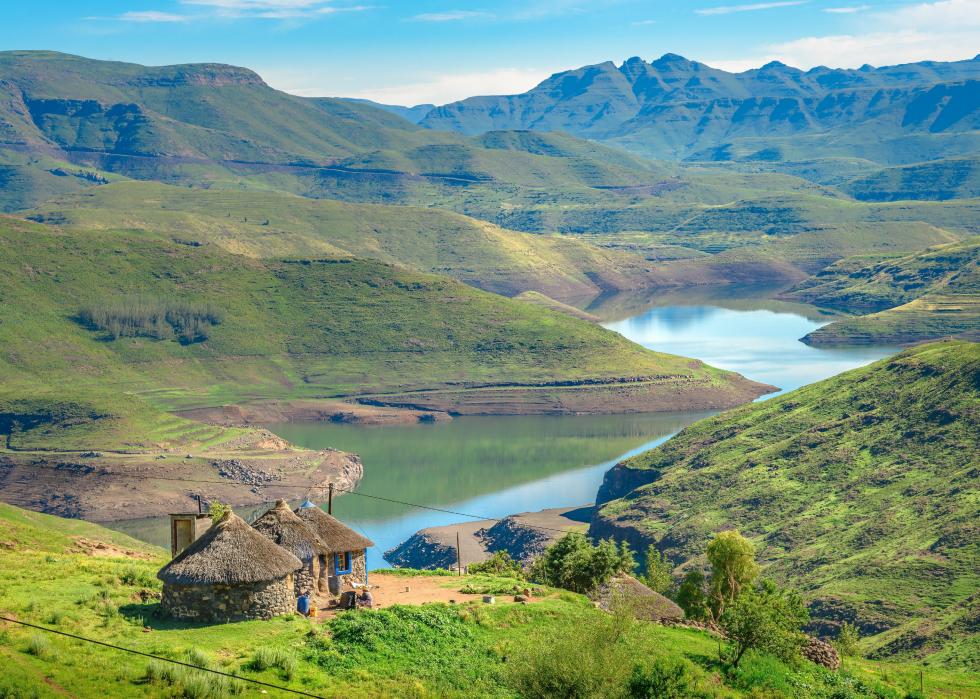
#50. Lesotho
- Tourism total contribution to GDP: $320.6 million (13.7% of total GDP; 821.9% increase since 1998)
- Jobs reliant on tourism: 92,300 (13% of total jobs)
Lesotho is beautiful, culturally rich, and features affordable accessibility from South Africa. The country’s highlands offer top-rate hiking, mountain lodges, and trading posts. The footprint of one of the largest dinosaurs believed to have lived on the continent was found in the country’s Roma Valley in 2016. Lesotho features nature preserves and Qacha’s Nek Snake Park.
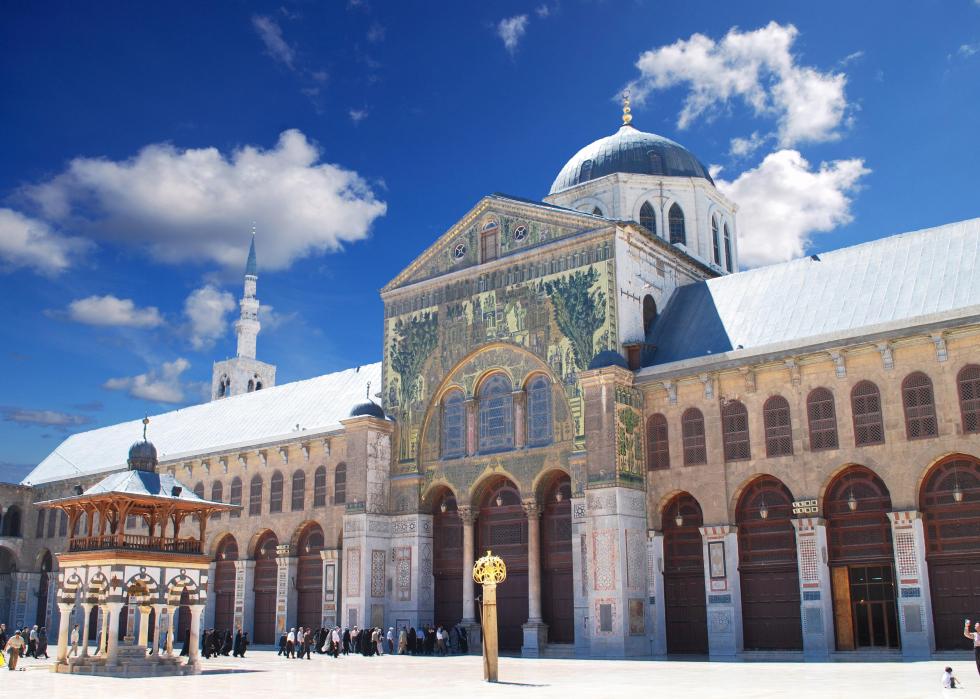
#49. Syrian Arab Republic
- Tourism total contribution to GDP: $2.4 billion (14% of total GDP; 6.2% decrease since 1998)
- Jobs reliant on tourism: 177,100 (8.3% of total jobs)
Before Syria’s decade-long civil war, which drew in the Islamic State and al-Qaeda, tourists flocked to Damascus’ old streets and the country’s historic sites. They visited Syria’s largest market, the al-Hamidiyah Souq, which is inside the old walled city of Damascus. Elsewhere, tourists traveled to the ancient city Palmyra; the Bosra theater, a large ancient Roman theater; and the citadels of Homs and Aleppo.
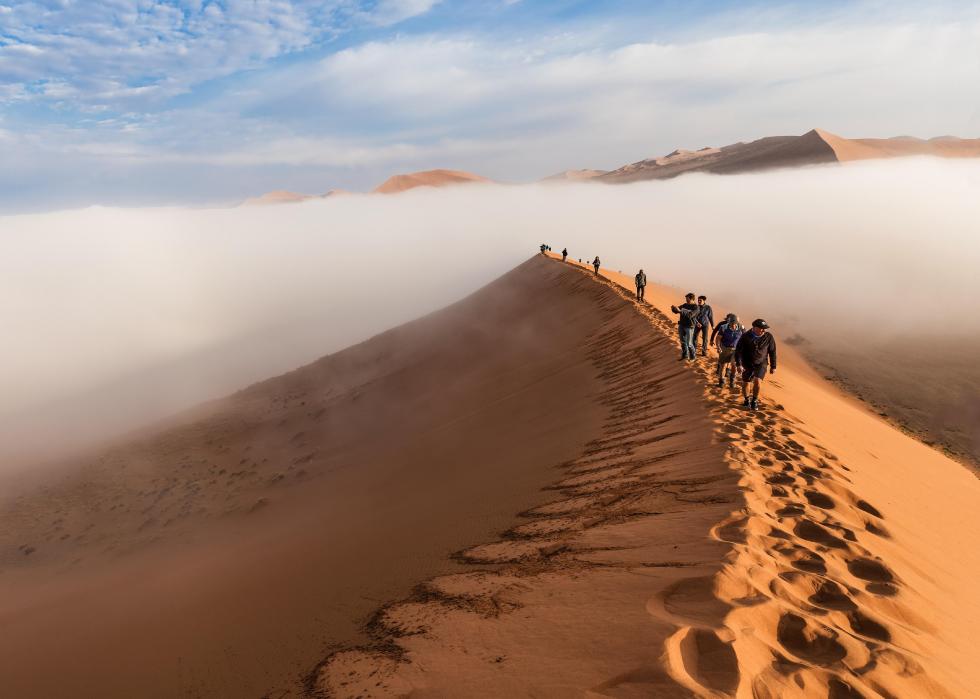
#48. Namibia
- Tourism total contribution to GDP: $1.9 billion (14.1% of total GDP; 1.4% decrease since 1998)
- Jobs reliant on tourism: 103,000 (14.2% of total jobs)
Namibia takes its name from the world's oldest desert, the Namib, and its landscape is varied, from the mountains inland, to rivers, canyons, and the plains of the Kalahari. A big draw is the chance to watch wildlife at Etosha National Park, including big cats, elephants, and black rhinos. It gained independence in 1990 from South Africa after a war of almost 25 years.
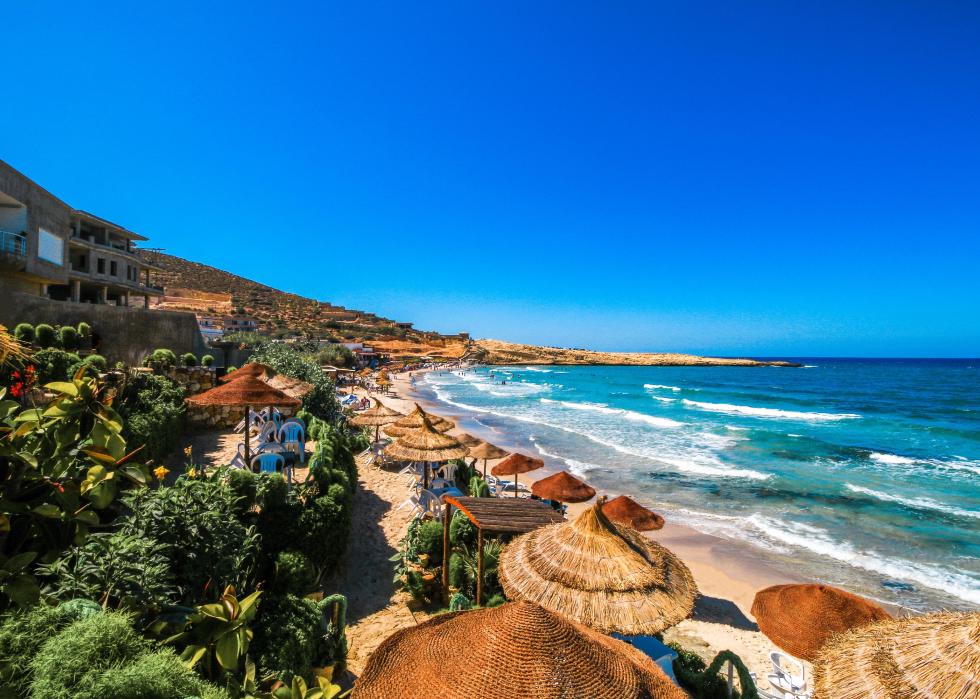
#47. Tunisia
- Tourism total contribution to GDP: $5.9 billion (14.4% of total GDP; 19.2% decrease since 1998)
- Jobs reliant on tourism: 478,300 (13.2% of total jobs)
Fodor’s Travel calls Tunisia a “fascinating melange” of a northern African country, an Islamic one since the first century A.D., and a former French colony. Its capital, Tunis, incorporates the ancient remains of Carthage, founded by the Phoenicians in the 8th century B.C., and its old walled medina includes souqs, palaces, and mosques. Another trip to take: Jeep safaris to small Berber villages.
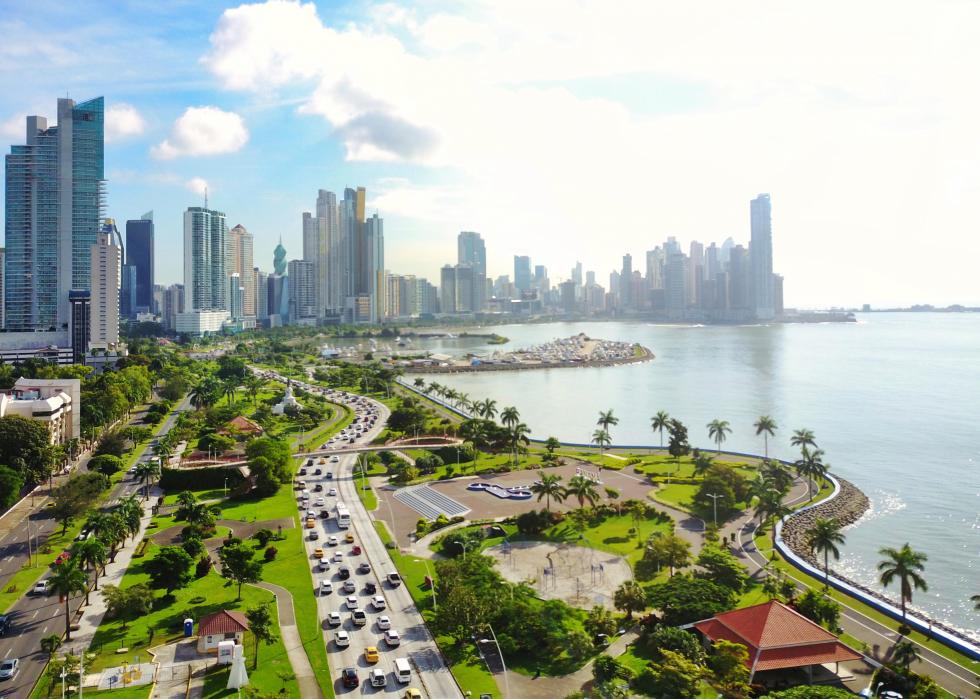
#46. Panama
- Tourism total contribution to GDP: $9 billion (14.6% of total GDP; 97.5% increase since 1998)
- Jobs reliant on tourism: 273,900 (14.6% of total jobs)
From beaches to parks to cultural sites, Panama offers tourists a wealth of experiences. Visitors can see the oldest Spanish fort and the first European settlement in the Pacific, meet two of the country's indigenous people, the Guna and the Emberá, and learn more about their well-preserved traditions or try the food of Panama's Afro-Caribbean community. And of course, there is the Panama Canal, starting at the visitor center at Miraflores.
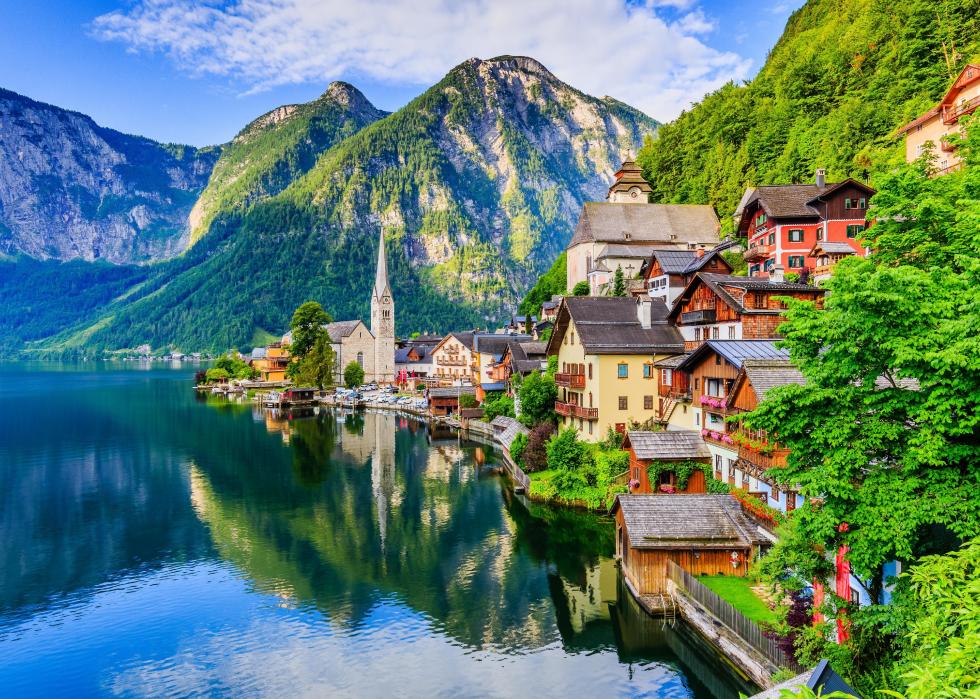
#45. Austria
- Tourism total contribution to GDP: $62.3 billion (14.6% of total GDP; 2.7% increase since 1998)
- Jobs reliant on tourism: 717,000 (15.9% of total jobs)
Austria is rich with attractions, from Renaissance palaces such as the Schloss Ambras in Innsbruck, to hikes in the Alps. Tourists can visit the Staatsoper, Vienna’s opera and ballet hall, watch the Lipizzaner stallions at the Spanish Riding School perform, or check out the largest accessible ice caves in Eisriesenwelt. See where Wolfgang Amadeus Mozart was inspired by the old town in Salzburg or painter Gustav Klimt by the light in Attersee.
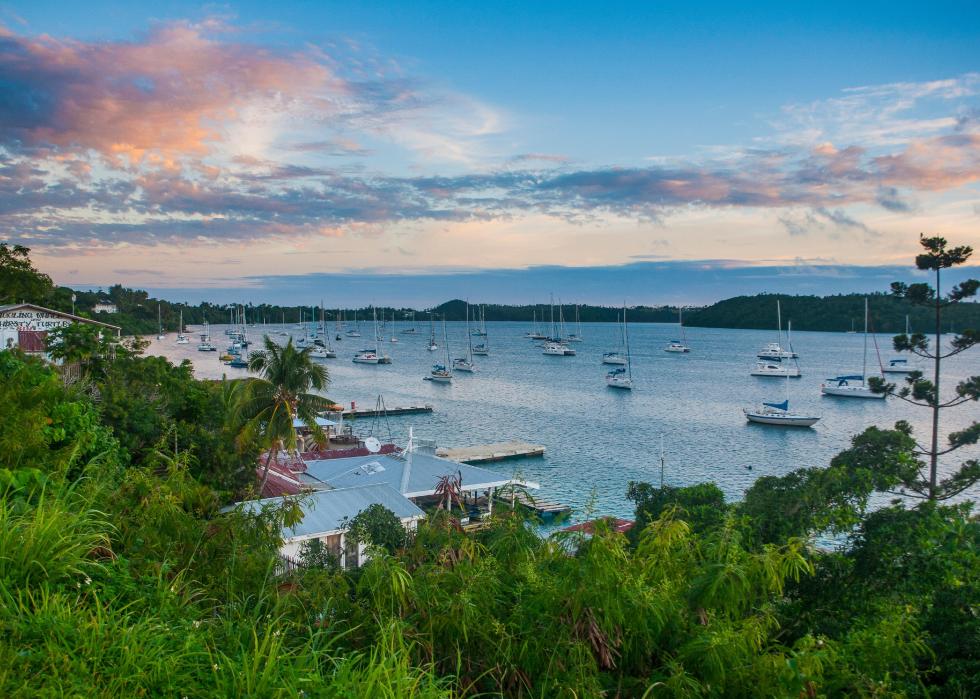
#44. Tonga
- Tourism total contribution to GDP: $60 million (14.8% of total GDP; 90% increase since 1998)
- Jobs reliant on tourism: 5,300 (15.9% of total jobs)
Tonga is made up of 176 islands, 40 of them inhabited, so there are many places to explore. The archipelago offers beaches, rainforests, coral atolls, active volcanoes, and ocean activities like kayaking, snorkeling, sailing, and fishing. The islands’ monarchy is the only surviving one in the South Pacific and is more than 1,000 years old. The kingdom observes Sunday as a day of rest and businesses and shops are closed by law.
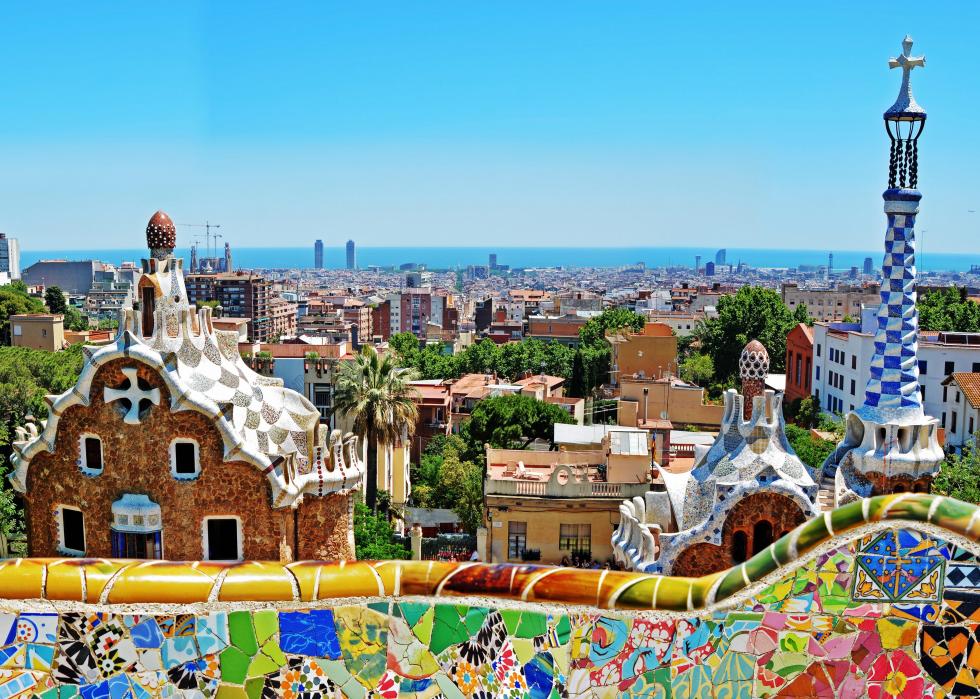
#43. Spain
- Tourism total contribution to GDP: $201.9 billion (14.9% of total GDP; 10.6% increase since 1998)
- Jobs reliant on tourism: 2.9 million (15% of total jobs)
Spain has a myriad of attractions: the beaches of the Canary Islands, the Gaudi architecture of Barcelona, flamenco shows, and Spanish guitar music in Seville, Granada’s Alhambra, the palace built by the Moors, and the Guggenheim Museum in Bilbao in Basque country. In the north, pilgrims each year follow the St. James’ Way to Santiago de Compostela, the capital of Galicia, and its cathedral.
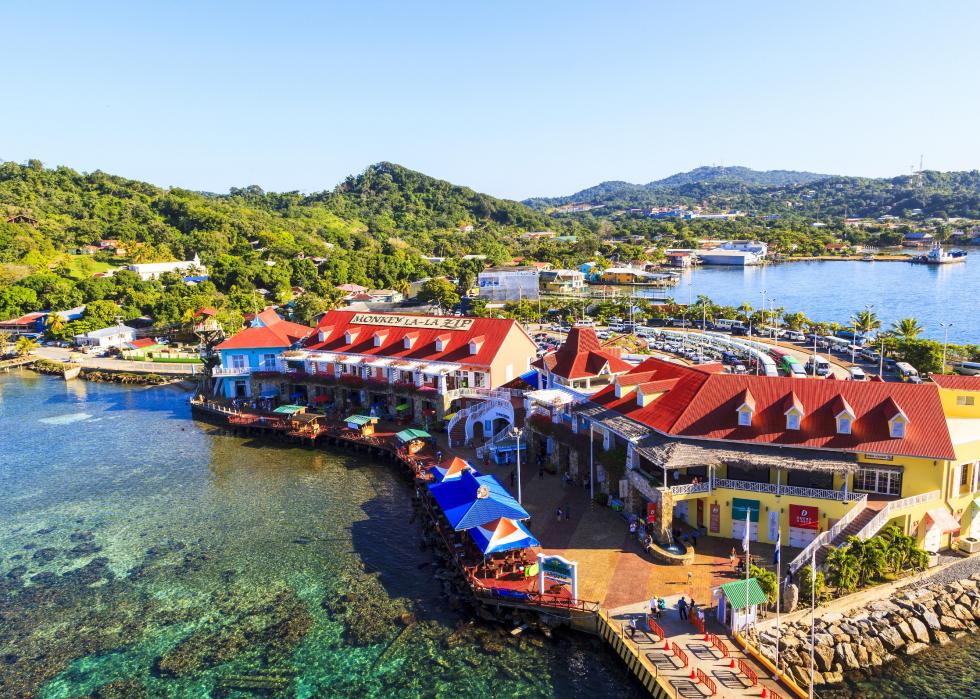
#42. Honduras
- Tourism total contribution to GDP: $3.5 billion (15.1% of total GDP; 62.8% increase since 1998)
- Jobs reliant on tourism: 538,800 (13.3% of total jobs)
Honduras has white beaches, the world’s second-largest barrier reef, pine-covered mountains, and white-water rivers. Visitors can see Mayan ruins or colonial cities, fortresses and bird reserves, take a coffee tour or one of a cigar factory, or go diving or bird watching.
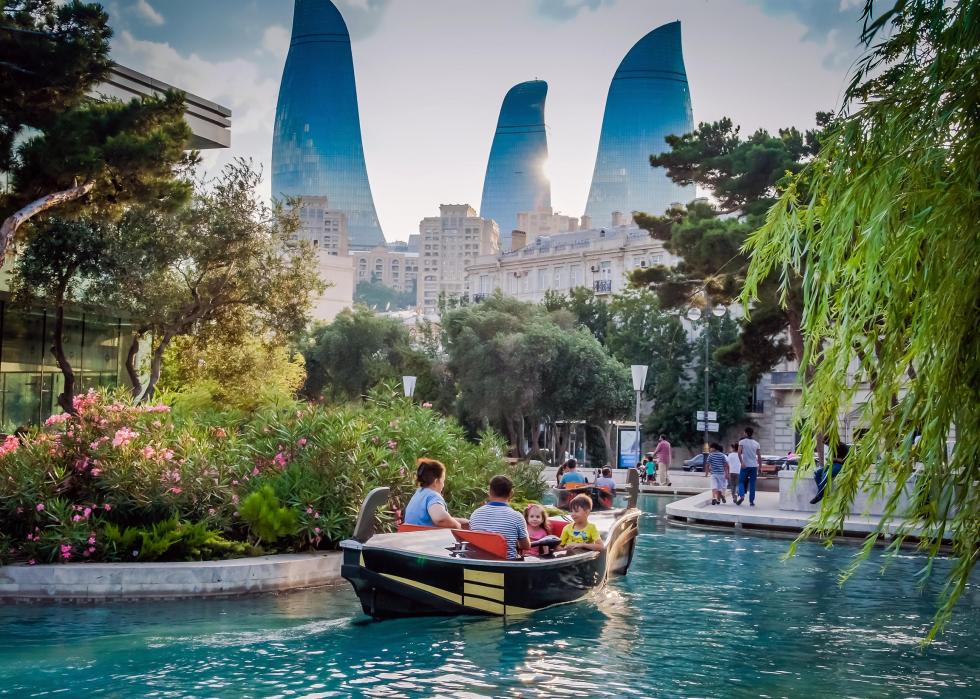
#41. Azerbaijan
- Tourism total contribution to GDP: $5.9 billion (15.1% of total GDP; 144.3% increase since 1998)
- Jobs reliant on tourism: 636,800 (13.8% of total jobs)
Azerbaijan's capital, Baku, is on the edge of the Caspian Sea. Its walled Old City or Icherisheher includes its oldest structure, the Maiden Tower, and the 15th-century Palace of the Shirvanshahs. Outside of the capital, tourists can visit traditional villages, hike in the Caucasus Mountains, or explore Sheki, once a stop on the Silk Road. Armenia and Azerbaijan reached a peace agreement in late 2020 over the disputed Nagorno-Karabakh region.
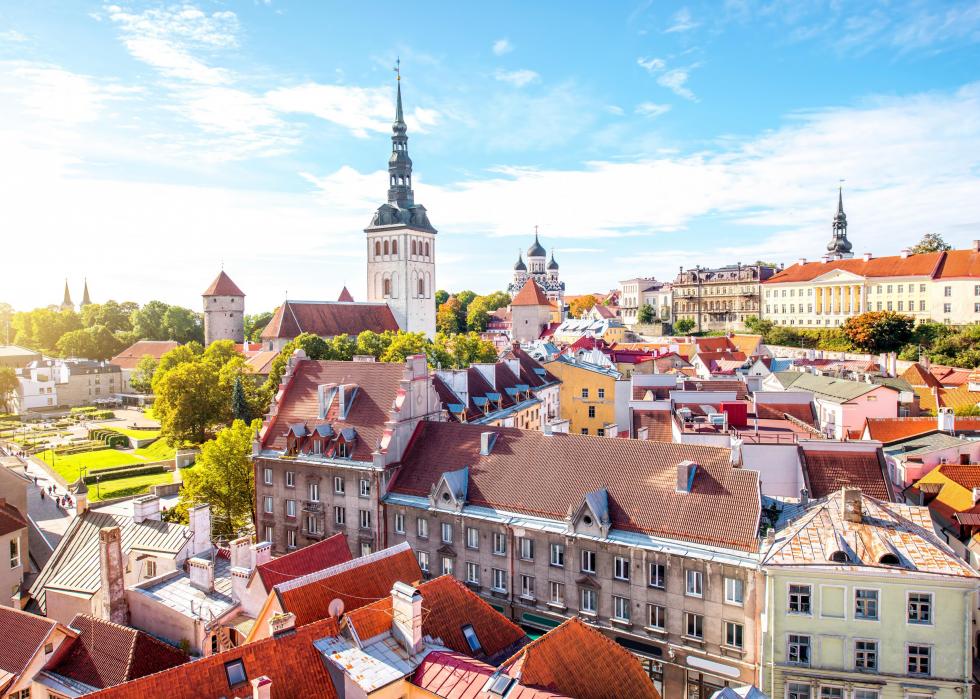
#40. Estonia
- Tourism total contribution to GDP: $4.1 billion (15.5% of total GDP; 2.4% decrease since 1998)
- Jobs reliant on tourism: 100,500 (15.5% of total jobs)
Estonia promotes its capital, Tallinn, as the best-preserved medieval city in Northern Europe. The country is about 50% forest, with more than 2,000 islands. You'll find traces of Viking culture, and the Estonian Song Celebration, which dates to 1869, attracts thousands of singers every five years.
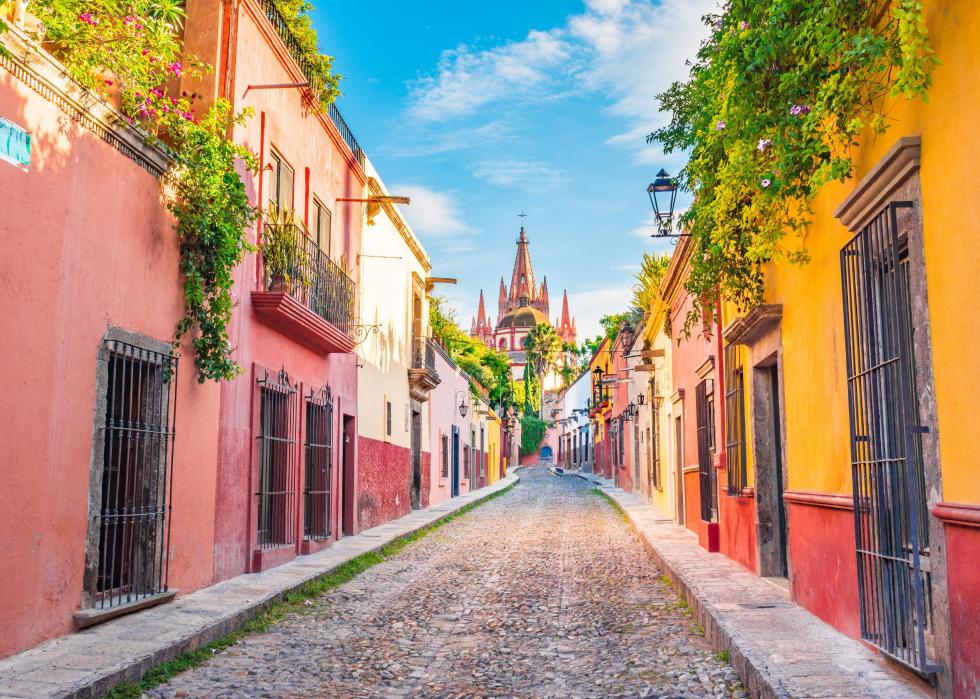
#39. Mexico
- Tourism total contribution to GDP: $191 billion (16.1% of total GDP; 18.7% increase since 1998)
- Jobs reliant on tourism: 8.8 million (16.6% of total jobs)
Mexico is famous for its beaches, including Cancun or Playa del Carmen along the Caribbean Sea, and those of Oaxaca on the Pacific Ocean. There are archaeological sites to explore, Chichén Itzá and Tulum on the Yucatan Peninsula, or the ancient city of Teotihuacán, where you'll find the pyramids of the sun and the moon. In Mexico City, most tourist attractions are in the historic city center.
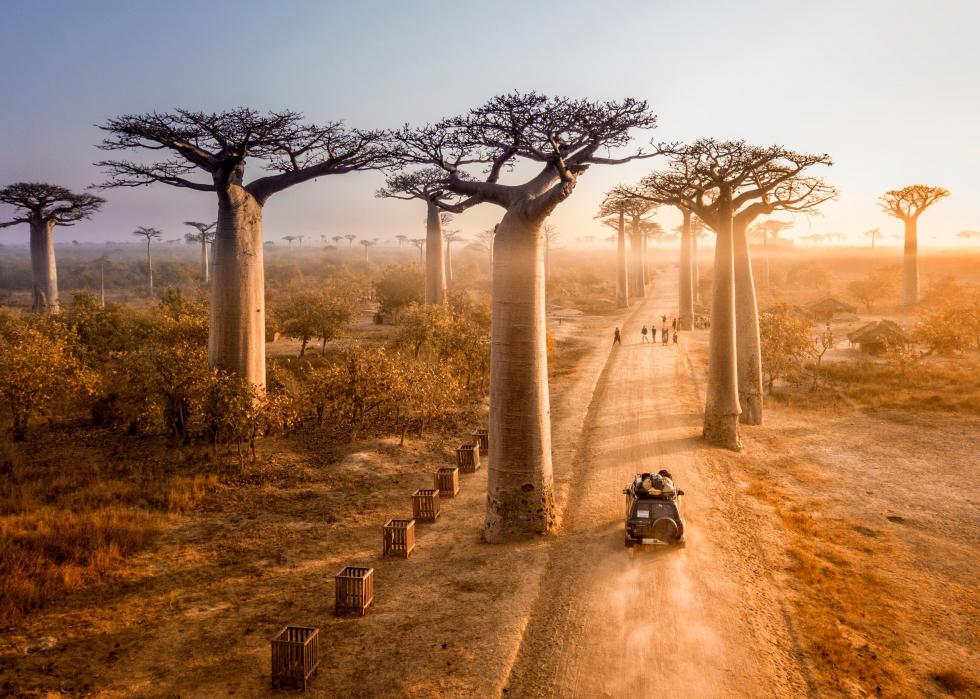
#38. Madagascar
- Tourism total contribution to GDP: $1.8 billion (16.2% of total GDP; 141.1% increase since 1998)
- Jobs reliant on tourism: 797,500 (13.6% of total jobs)
Five percent of all known plant and animal species can be found on the island and only here, the Lonely Planet guide notes. It is best known for the lemur but there also are mongoose, baobabs, sharks, orchids, and turtles. The landscape is varied, from desert to rainforest, and there are national parks to explore and remote resorts to visit.

#37. Armenia
- Tourism total contribution to GDP: $1.9 billion (16.2% of total GDP; 274.4% increase since 1998)
- Jobs reliant on tourism: 169,300 (14.4% of total jobs)
Armenia promotes its long winemaking tradition, which has seen renewed interest in the last 10 years with wine bars, wine festivals, and winery tours. A 6,100-year-old winery was found in 2007. Other attractions: hiking, caving, rope jumping, and other outdoor activities or explore the country’s history through its fortresses, petroglyphs, and other historic sites. Armenia and Azerbaijan reached a peace agreement in late 2020 over the disputed Nagorno-Karabakh region.
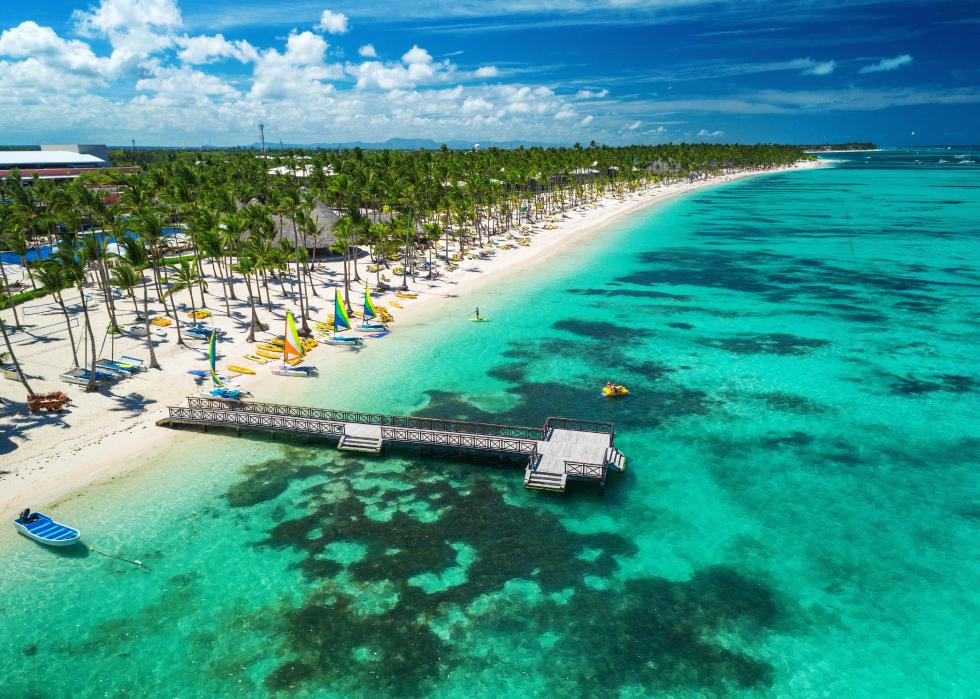
#36. Dominican Republic
- Tourism total contribution to GDP: $13.6 billion (17.2% of total GDP; 6.3% increase since 1998)
- Jobs reliant on tourism: 696,500 (15.9% of total jobs)
This Caribbean island has nearly 1,000 miles of coastline, and 250 miles of pristine beaches. A white marlin tournament is held in May. In the capital, Santo Domingo, tourists can visit Colonial City, the first European settlement of the Americas. Founded by Bartholomew Columbus, Christopher Columbus' brother, in 1498, it was originally called La Isabela.
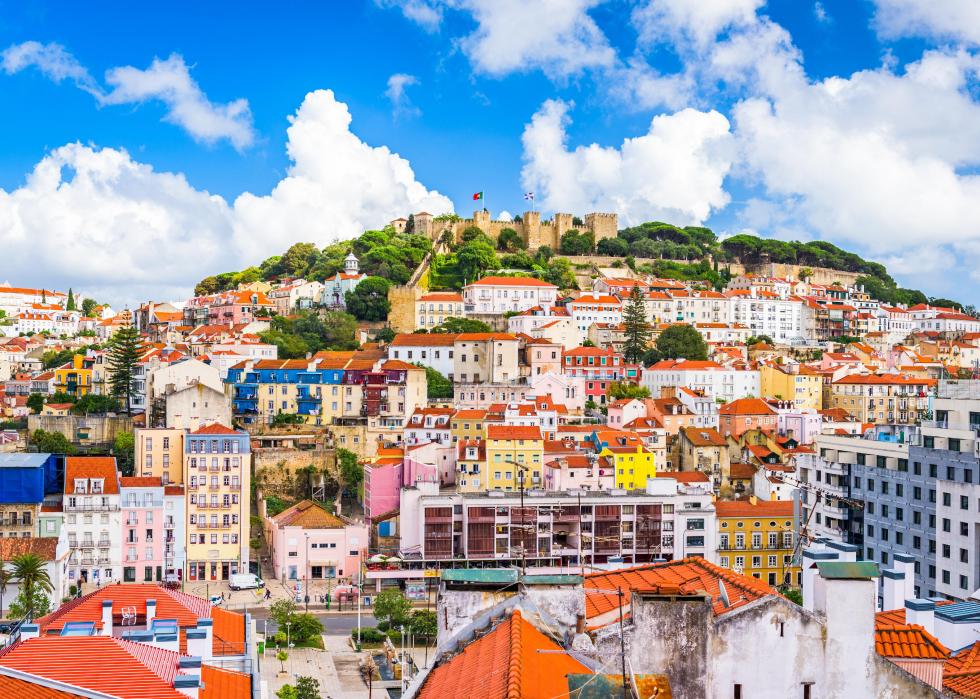
#35. Portugal
- Tourism total contribution to GDP: $40 billion (17.8% of total GDP; 64.9% increase since 1998)
- Jobs reliant on tourism: 1 million (21.1% of total jobs)
Portugal was founded in the 12th century in the north in Porto and the surrounding area. Porto and Vila Nova de Gaia, across the Douro River, are known for port, which is shipped around the world, and there are many places to sample the fortified wine. Visitors can take a wine-tasting trip through the Douro Valley. Lisbon, the country’s capital, is characterized by its seven hills and cobblestone alleys.
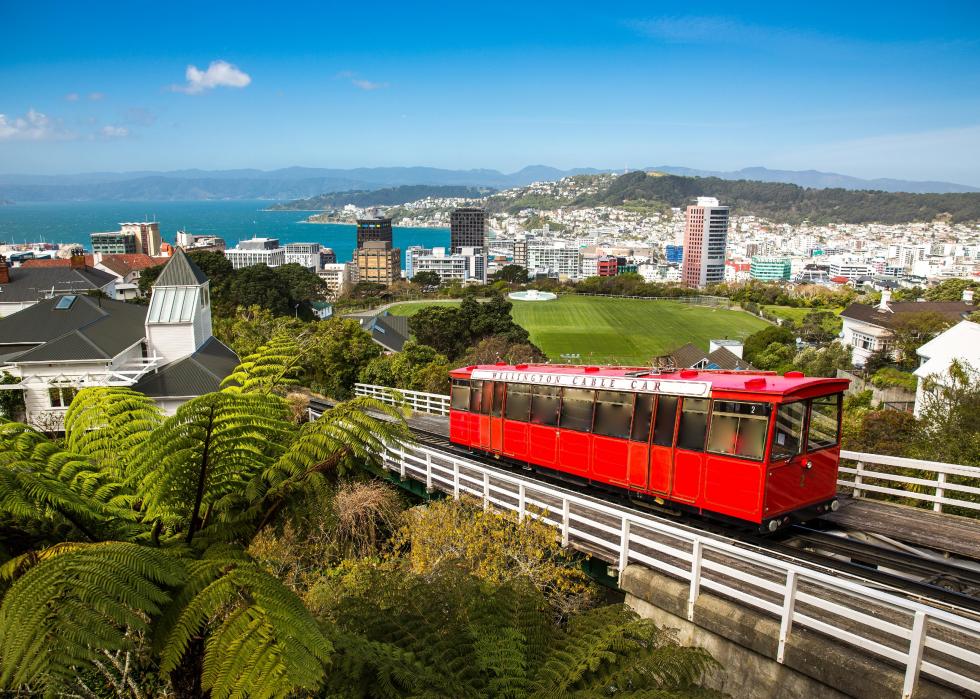
#34. New Zealand
- Tourism total contribution to GDP: $33.9 billion (17.9% of total GDP; 5.8% decrease since 1998)
- Jobs reliant on tourism: 526,900 (21.8% of total jobs)
New Zealand consists of the North Island and the South Island and both have top things for travelers to do. Explore the capital, Wellington, and its food scene; visit the Waitomo Caves; and hike the Pouakai Crossing in Egmont National Park. On the South Island, take in Aoraki/Mount Cook, New Zealand’s highest peak, and the Victorian Larnach Castle in Dunedin.
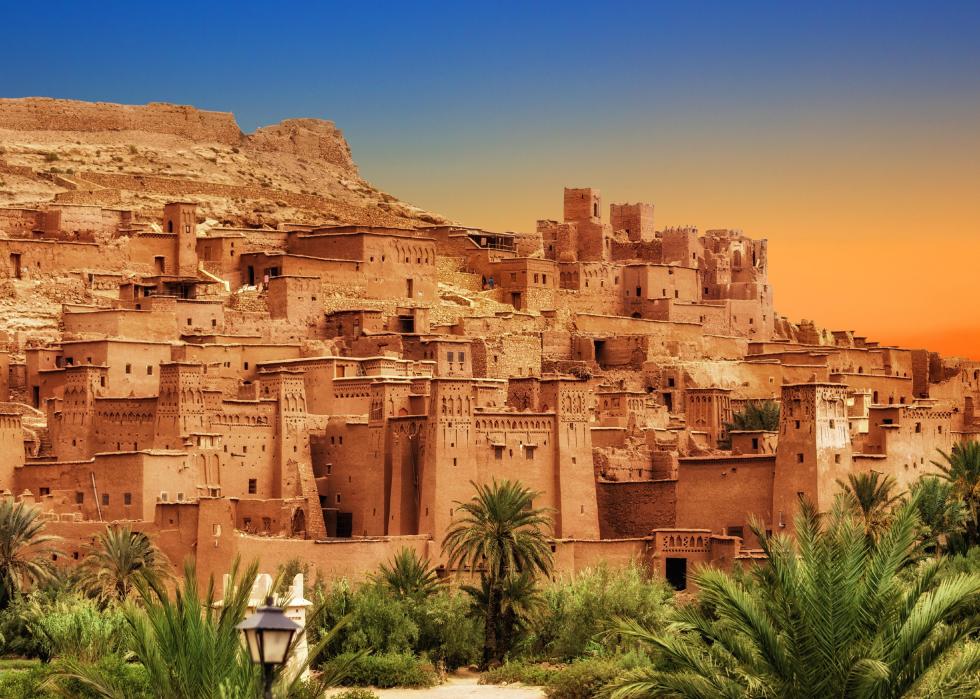
#33. Morocco
- Tourism total contribution to GDP: $20.8 billion (18.6% of total GDP; 69.8% increase since 1998)
- Jobs reliant on tourism: 1.9 million (16.4% of total jobs)
Visitors come to see the cities of Marrakesh, Fez, and Tangier, and shop in the souqs or markets. There are archaeological sites to see such as the Roman city of Volubilis or Lixus and its ruins of an amphitheatre and a mosaic depicting Neptune. Hike in the desert and spend the night in luxury tents. After the desert, there are the mountains, the High Atlas and the Rif, to explore.
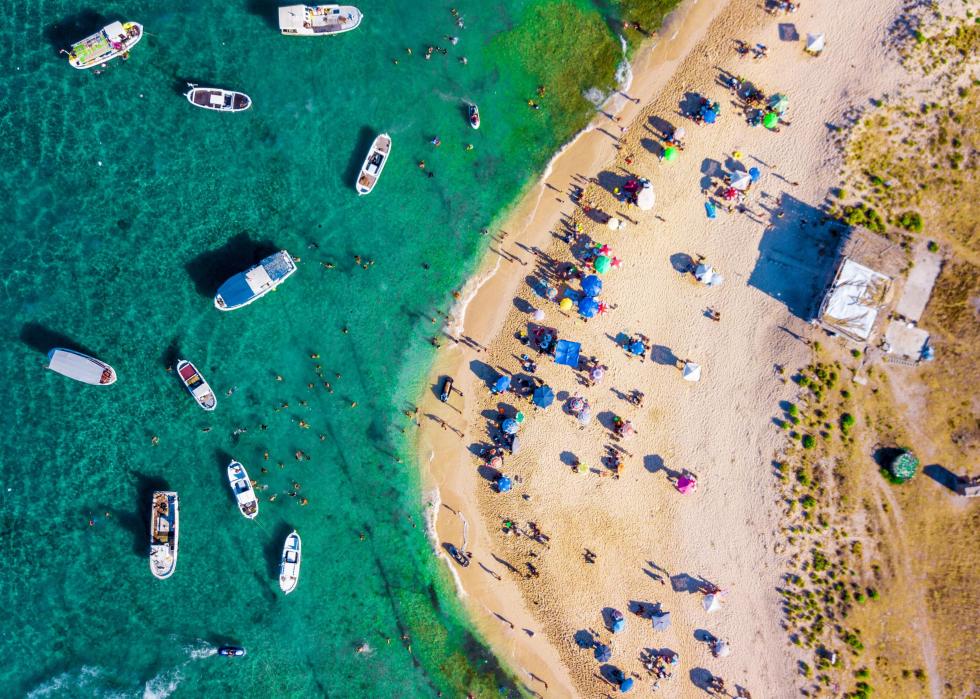
#32. Lebanon
- Tourism total contribution to GDP: $9.8 billion (19.1% of total GDP; 285.7% increase since 1998)
- Jobs reliant on tourism: 386,800 (18.4% of total jobs)
Lebanon offers swimming in the Mediterranean Sea and skiing in the mountains. It was home to the Phoenicians in its coastal cities of Byblos, Sidon, and Tyre, and the inland city of Baalbek, where today visitors can see the remains of Roman temples. But Lebanon’s economy is in freefall, and Beirut is still rebuilding from the explosion in its port in 2020 that damaged much of the city, including its historic homes.
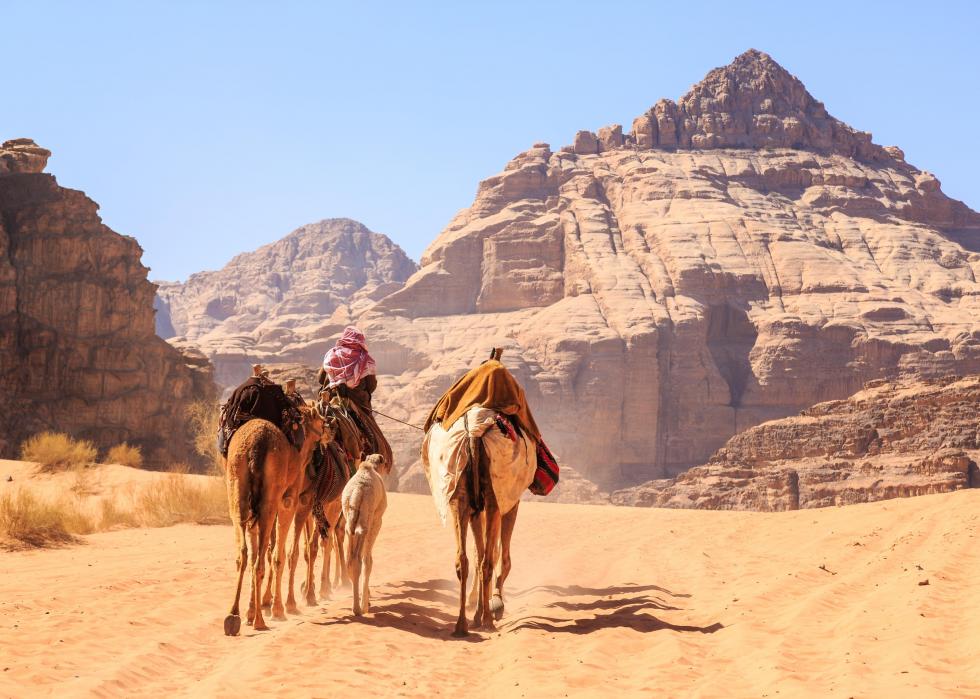
#31. Jordan
- Tourism total contribution to GDP: $8.2 billion (19.7% of total GDP; 12.7% decrease since 1998)
- Jobs reliant on tourism: 229,500 (20.1% of total jobs)
Amman, Jordan's capital, is built on a series of hills, with the Citadel on the highest. Among the country's attractions: Petra, the Nabataean city carved into sandstone; the desert landscape of Wadi Rum; Aqaba, a city on the Red Sea; the Roman ruins at Jerash; and the Dana Biosphere Reserve.
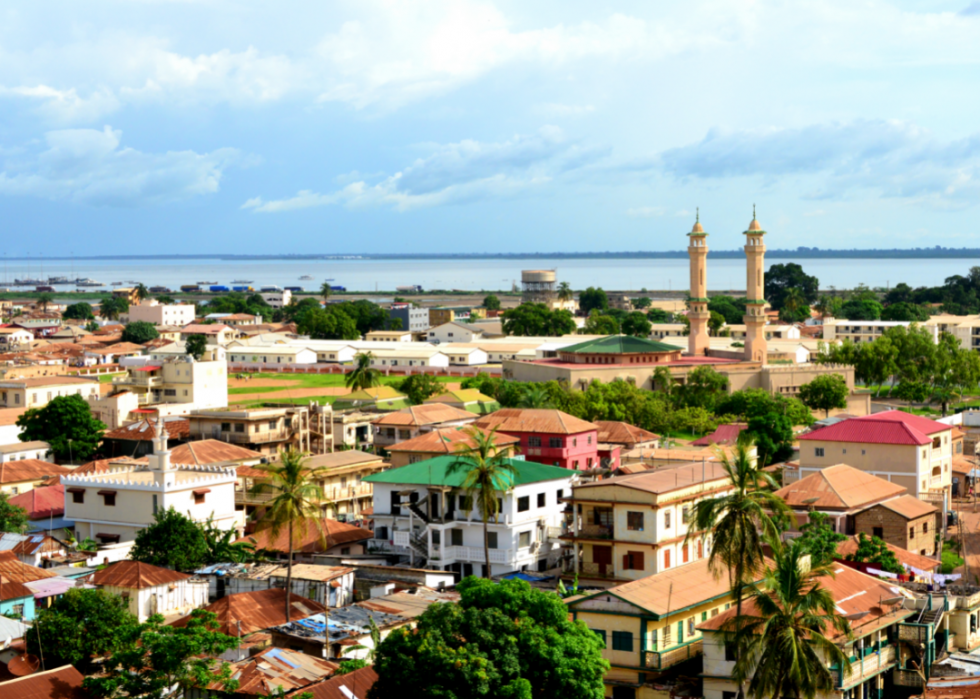
#30. The Gambia
- Tourism total contribution to GDP: $225.6 million (20.2% of total GDP; 55.3% increase since 1998)
- Jobs reliant on tourism: 109,700 (17% of total jobs)
Visitors to The Gambia come for the beaches on the Atlantic Ocean, tours of its villages and the River Gambia, and craft and wood carving markets. The Gambia has six protected areas for its more than 500 species of birds, and other national parks for wildlife, including monkeys and the threatened hippopotamus.
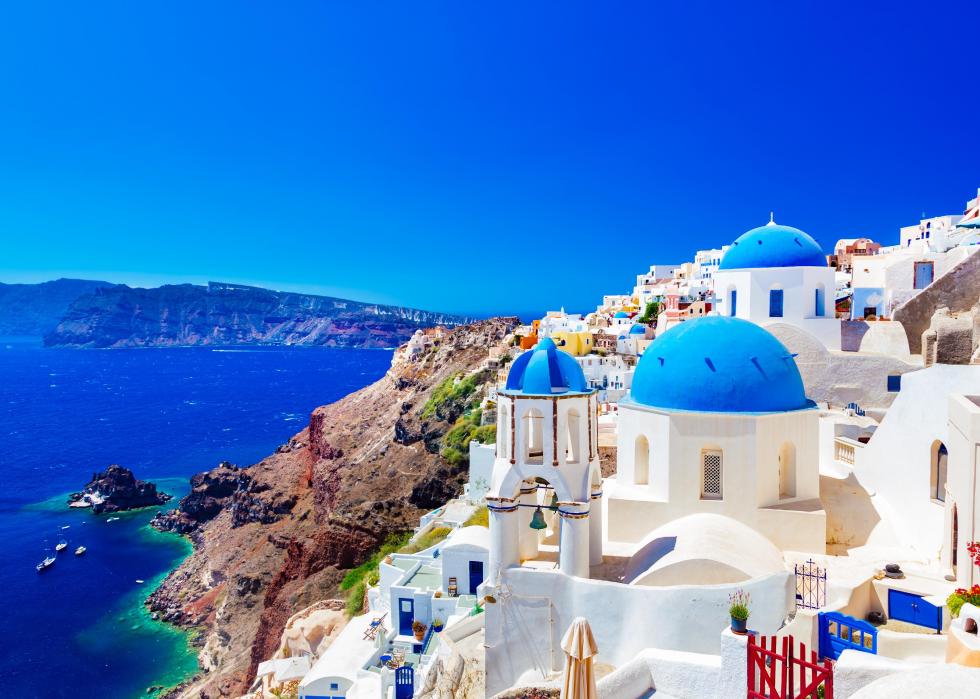
#29. Greece
- Tourism total contribution to GDP: $41.8 billion (20.2% of total GDP; 55.7% increase since 1998)
- Jobs reliant on tourism: 987,200 (25.4% of total jobs)
Tourists are drawn to the sites of ancient Greece, the Acropolis in Athens, the Parthenon and the Erechtheion temple, and other historic places throughout the country. There are also the islands to visit, Santorini, Mykonos, and the Cyclades, among them.
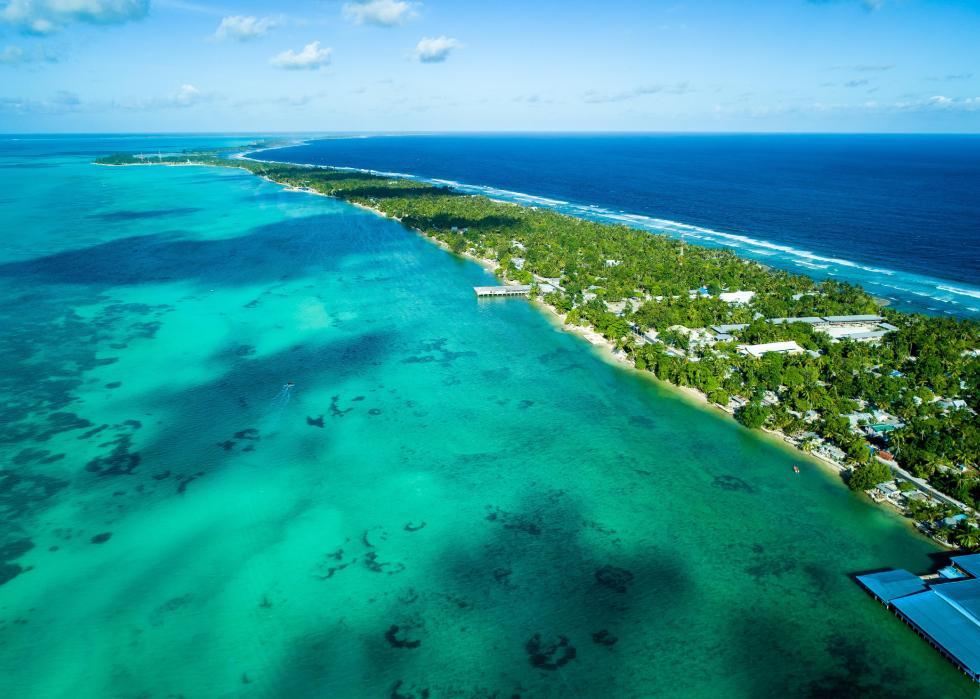
#28. Kiribati
- Tourism total contribution to GDP: $40 million (20.9% of total GDP; 85.6% increase since 1998)
- Jobs reliant on tourism: 5,300 (17.3% of total jobs)
Kiribati is made up of 33 islands in the central Pacific Ocean, 21 of which are inhabited. Part of Micronesia, the republic offers fishing, surfing, diving and snorkeling, bird watching, and picturesque tours. The islands were invaded by the Japanese in 1941 and there are a number of World War II historical sites.
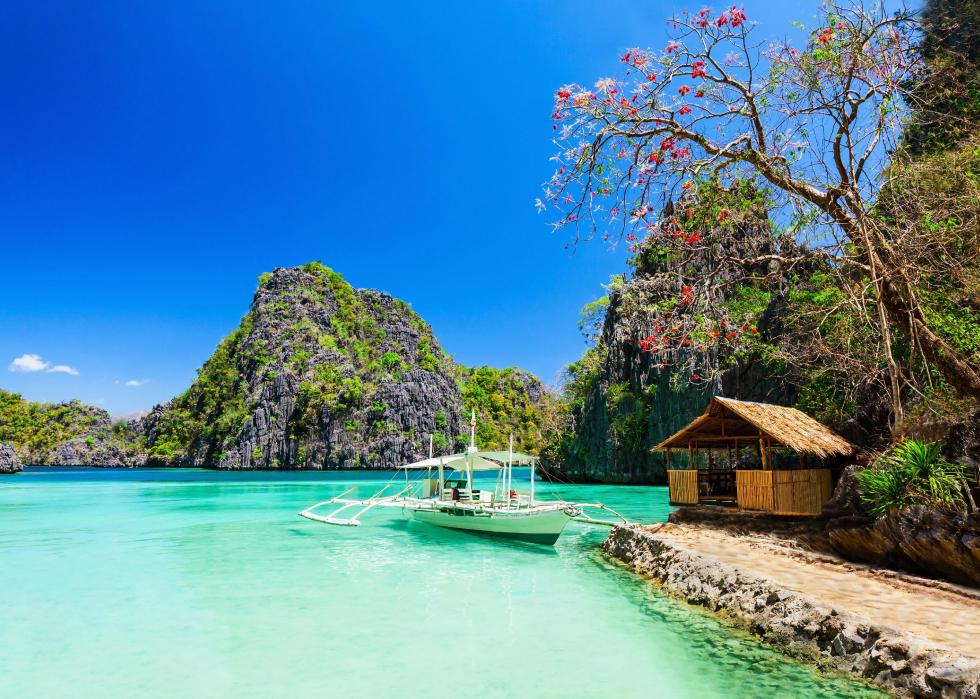
#27. Philippines
- Tourism total contribution to GDP: $70.3 billion (21.1% of total GDP; 77.6% increase since 1998)
- Jobs reliant on tourism: 8.3 million (19.1% of total jobs)
The Philippines offer everything from beach resorts, surfing, and scuba diving to hiking in national parks. There are waterfalls, a marine reserve on Palaui Island, and a national park on Hundred Islands. The Yap-Sandiego House is a preserved historical Filipino house or there are festivals such as the Coconut Festival, a weeklong celebration honoring the patron saint, Paul the Hermit.
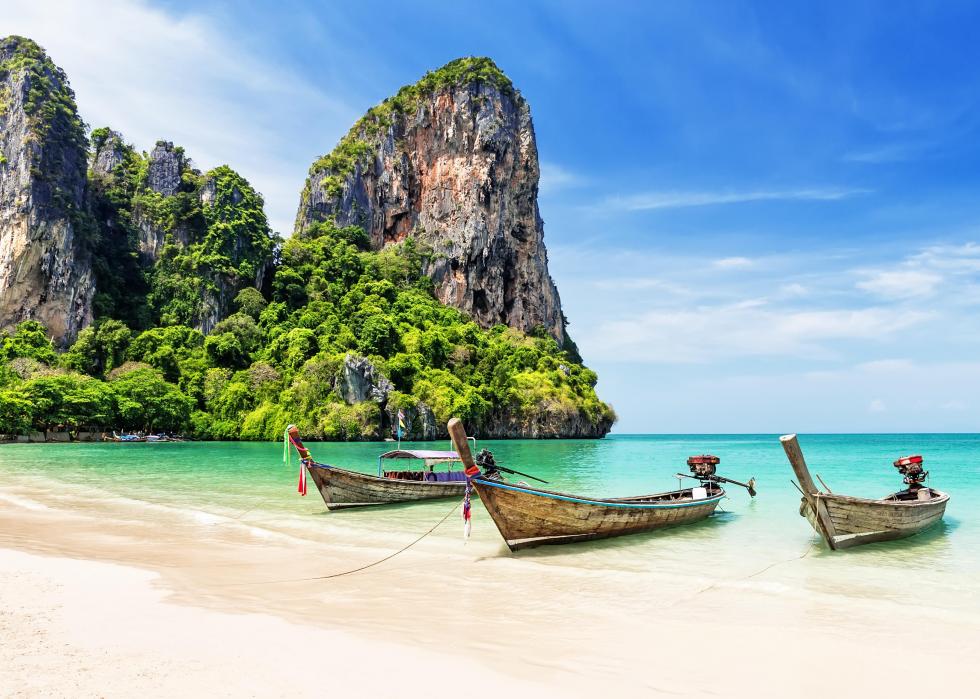
#26. Thailand
- Tourism total contribution to GDP: $102.1 billion (22.1% of total GDP; 41.4% increase since 1998)
- Jobs reliant on tourism: 6.2 million (16.1% of total jobs)
Tourists come to Thailand for outstanding beaches, temples, and food. Eating tours showcase noodles in Bangkok or seafood in Phuket. Join a meditation retreat, visit a temple such as Wat Pho or Wat Phra Kaew, or observe the country's religious festivals. Besides the coasts, there are 1,400 islands to explore.
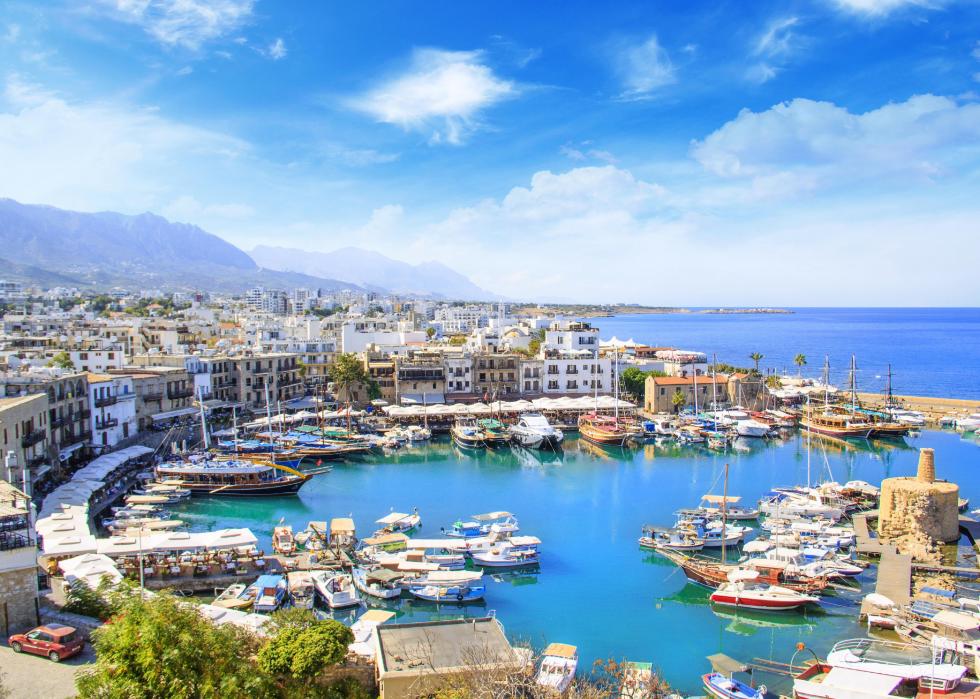
#25. Cyprus
- Tourism total contribution to GDP: $5 billion (23.1% of total GDP; 14.8% decrease since 1998)
- Jobs reliant on tourism: 88,600 (23.3% of total jobs)
Cyprus has been divided since 1974 between the two-thirds controlled by Greek Cypriots and the one-third controlled by Turkish Cypriots. Most visitors head to the Greek section where they find beaches throughout, diving, sailing, and other water sports. Birdwatchers can look out for flocks of flamingos on the island’s salt lakes. Tourism in the northern, Turkish section is less developed but prices are lower.
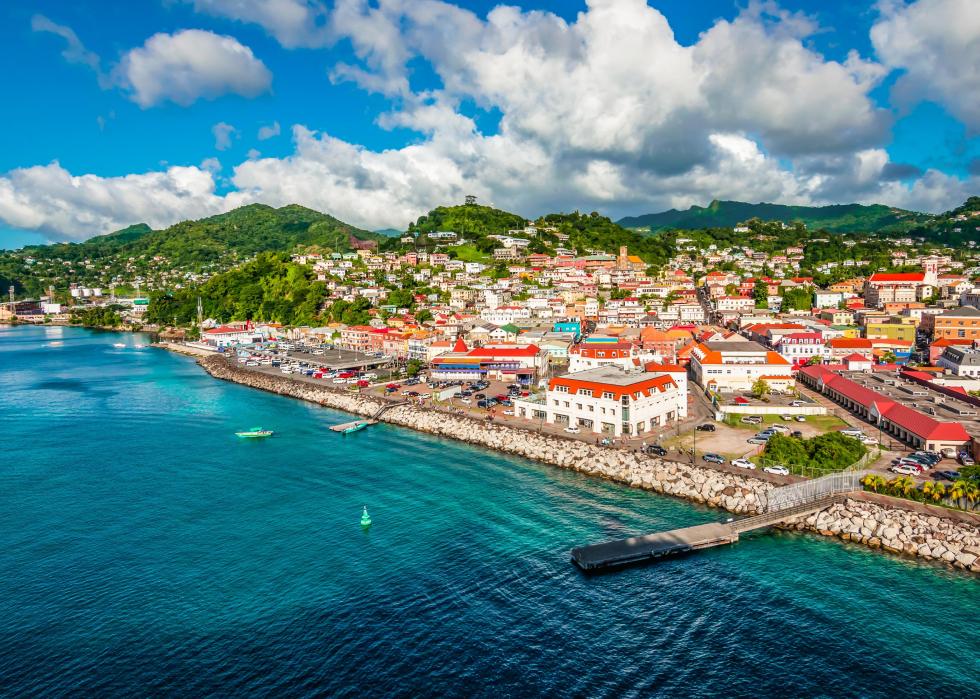
#24. Grenada
- Tourism total contribution to GDP: $262.7 million (23.3% of total GDP; 0.3% increase since 1998)
- Jobs reliant on tourism: 10,500 (21.5% of total jobs)
Grenada is actually a state in the southern Caribbean made up of three islands—Grenada, Carriacou, and Petite Martinique—that calls itself the Spice Island. It has what it says is the world’s first underwater sculpture park, as well as waterfalls and white-sand beaches. Both the French and the British controlled the island and today it retains those influences as well as Amerindian and African customs.
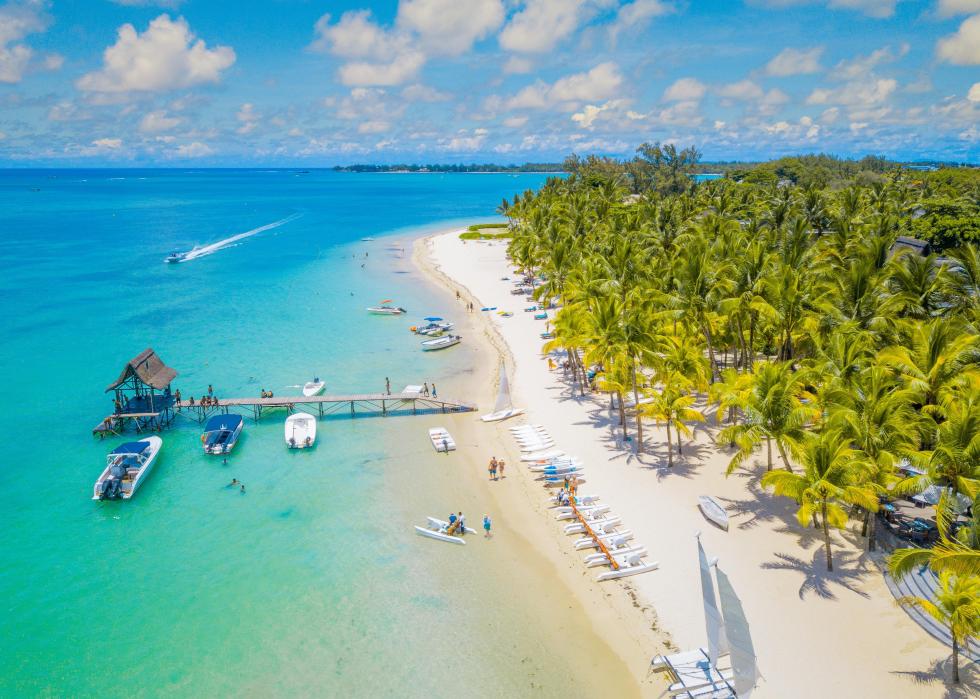
#23. Mauritius
- Tourism total contribution to GDP: $3.2 billion (23.4% of total GDP; 4% decrease since 1998)
- Jobs reliant on tourism: 130,500 (22.4% of total jobs)
An island in the Indian Ocean, Mauritius is known for beaches, reefs, and lagoons. In the capital, Port Louis, tourists can visit Eureka House, a Creole-style house, or the Pamplemousses Botanical Garden, also known as the Sir Seewoosagur Ramgoolam Botanical Gardens, created in the 18th century. Take in the views from the Trou aux Cerfs volcano crater. In the interior of the island, which is mountainous, there is the Black River Gorges National Park, with hiking trails through rainforests and waterfalls.
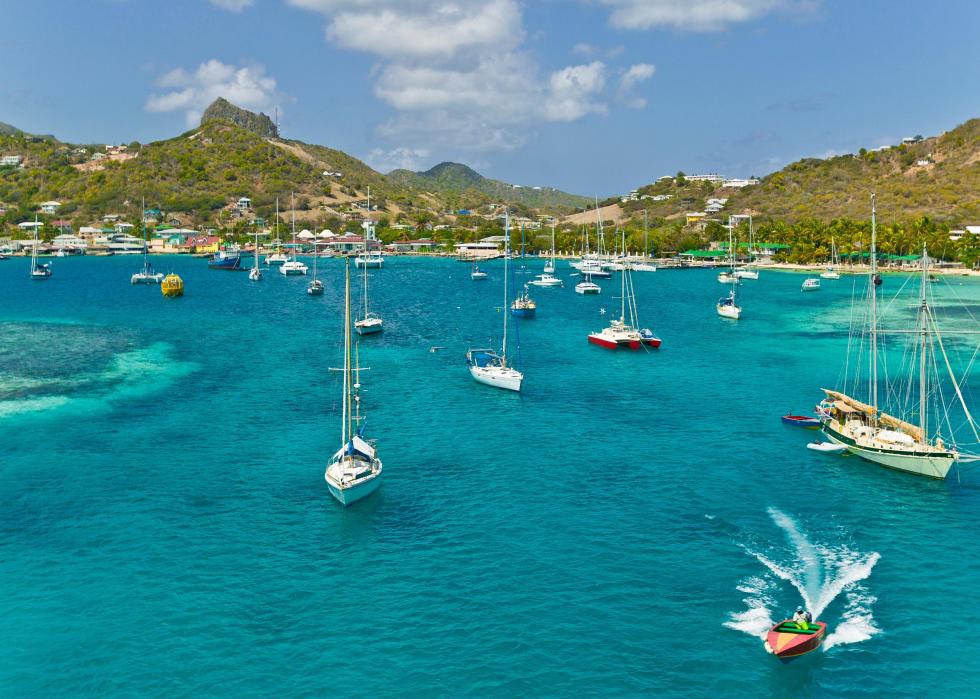
#22. St. Vincent and the Grenadines
- Tourism total contribution to GDP: $193.7 million (23.9% of total GDP; 18.2% decrease since 1998)
- Jobs reliant on tourism: 9,700 (22% of total jobs)
St. Vincent and the Grenadines is made up of 36 volcanic islands north of Grenada, featuring white-sand beaches and visited by beach-goers and boaters. There are coral reefs around the islands, some of which are private, and opportunities for diving and snorkeling. The capital, Kingstown, has preserved its colonial buildings and cobblestoned streets.
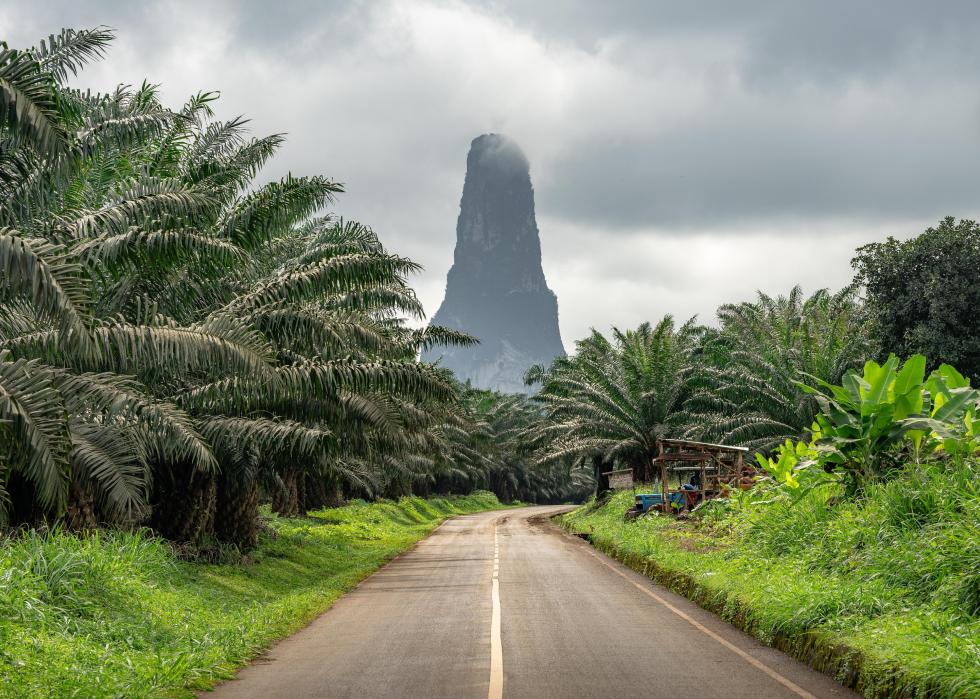
#21. São Tomé and Príncipe
- Tourism total contribution to GDP: $106.1 million (24.1% of total GDP; 226.1% increase since 1998)
- Jobs reliant on tourism: 14,800 (23.5% of total jobs)
São Tomé and Príncipe is an island country off the west coast of Africa, in the Gulf of Guinea, with beaches and rainforests. The islands, just north of the Equator, are part of a volcano chain. The Obo National Park makes up nearly 30% of the two islands and features more than 230 types of birds.
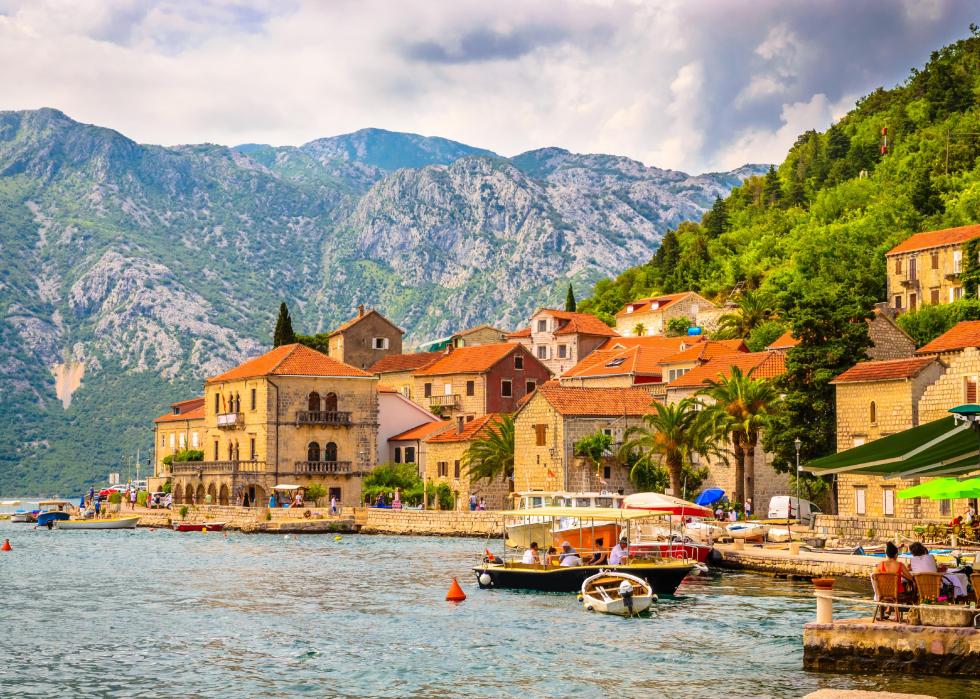
#20. Montenegro
- Tourism total contribution to GDP: $1.2 billion (25.1% of total GDP; 54.9% increase since 1998)
- Jobs reliant on tourism: 39,200 (20% of total jobs)
The Budva Riviera along the Adriatic coast is one of the most popular spots in Montenegro. An old town in Budva, Stari Grad, features Venetian walls and marble streets. The summer Sea Dance Festival attracts international musicians and fans from around the world. The Bay of Kotor was an important cultural and artistic center in the Middle Ages.
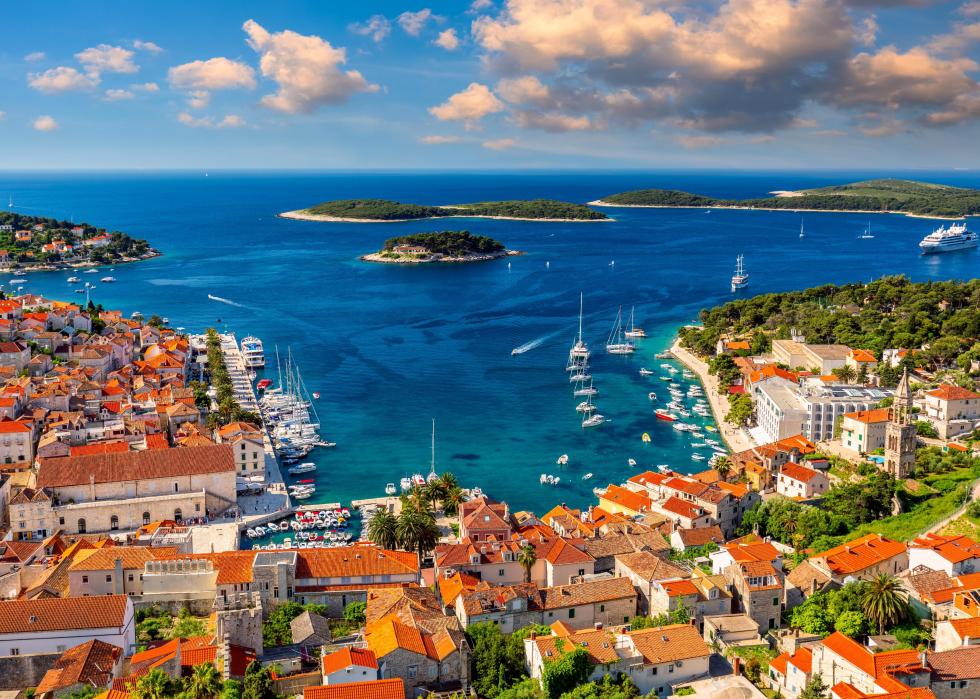
#19. Croatia
- Tourism total contribution to GDP: $14.2 billion (25.1% of total GDP; 45% increase since 1998)
- Jobs reliant on tourism: 319,800 (23.4% of total jobs)
Old-town Dubrovnik is distinctive with its red-tiled roofs by the Adriatic Sea. Many of the tiles had to be replaced after the Balkan wars of the 1990s, and new ones were made in Toulouse, France. More recently, Croatia has become the backdrop of Game of Thrones, drawing a new category of tourists.
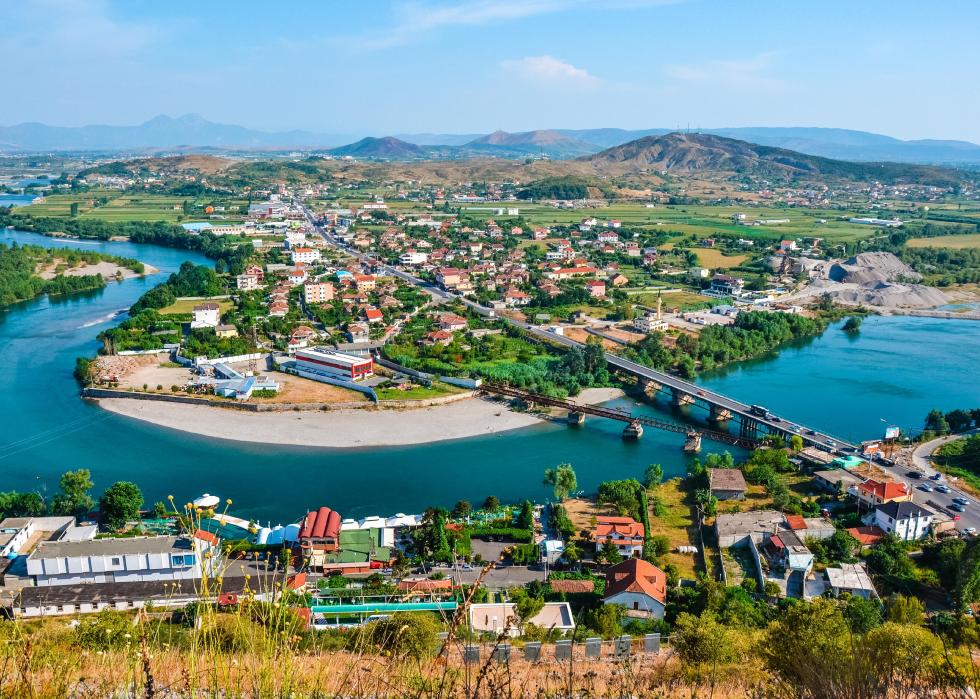
#18. Albania
- Tourism total contribution to GDP: $3.6 billion (26.3% of total GDP; 176.1% increase since 1998)
- Jobs reliant on tourism: 302,500 (24.3% of total jobs)
Albania’s borders were closed during a large part of the 20th century, but that changed with the end of its communist government in 1992. Since then tourists have been discovering its beaches, castles, and Greek and Roman sites. Rough Guides recommends visiting Tirana, the capital, and booking a food tour to try the traditional Albanian dishes.
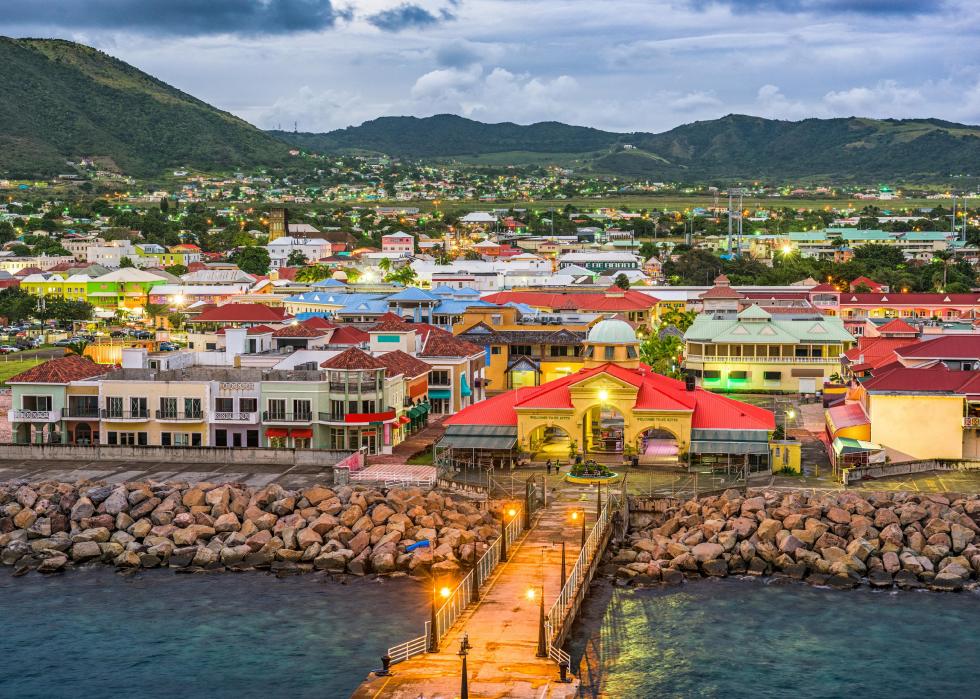
#17. St. Kitts and Nevis
- Tourism total contribution to GDP: $263.7 million (26.8% of total GDP; 9.6% decrease since 1998)
- Jobs reliant on tourism: 6,500 (25.6% of total jobs)
Lying between the Atlantic Ocean and the Caribbean Sea, St. Kitts and Nevis is known for its beaches and mountains, a volcano that rises above rainforests, and offshore coral beds. Its capital is Basseterre, founded in 1627 as a French colony.

#16. Malta
- Tourism total contribution to GDP: $3.3 billion (26.9% of total GDP; 14.1% decrease since 1998)
- Jobs reliant on tourism: 55,100 (28.1% of total jobs)
The Maltese archipelago is south of Sicily and north of Africa at the center of the Mediterranean Sea. It is made up of three islands (Malta, Gozo, and Comino), and its capital is Valletta. Some top things to do: Explore the streets of its medieval capital, Mdina, known as the Silent City; take a cruise around Valletta's Grand Harbor; or visit St. John's Co-Cathedral and see the "Beheading of St John" by Caravaggio.
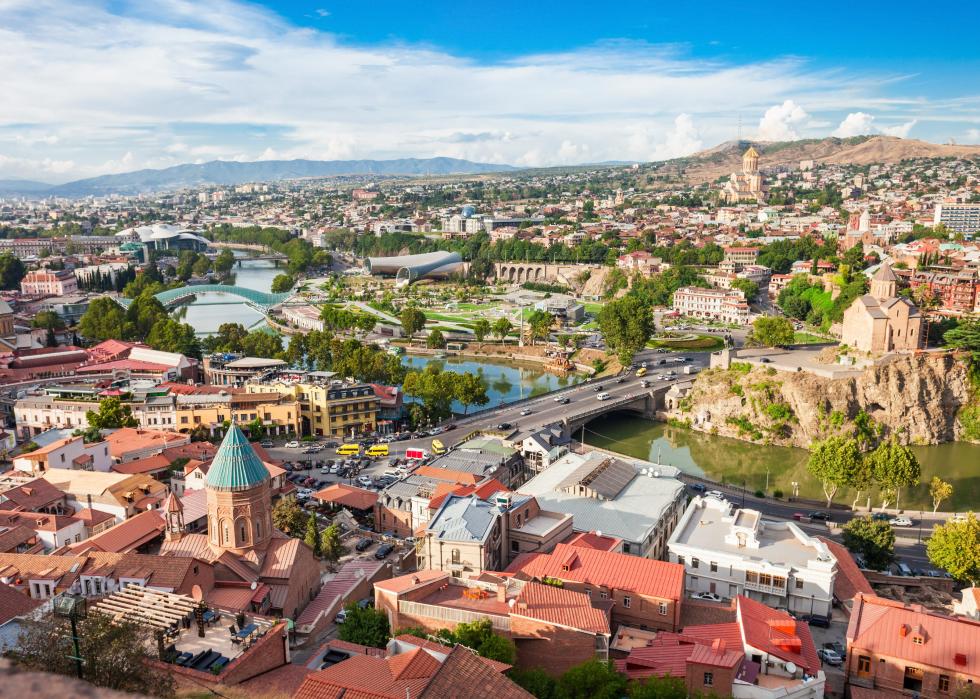
#15. Georgia
- Tourism total contribution to GDP: $4.9 billion (31.3% of total GDP; 107.5% increase since 1998)
- Jobs reliant on tourism: 489,100 (27.3% of total jobs)
Lonely Planet calls Georgia the most visited country in the South Caucasus and notes its varied landscapes and rich culture. Old churches, vineyards, restaurants, and wine bars in the capital, Tbilisi, are popular with tourists. One famous attraction: Vardzia, a cave monastery dating from the 12th century.

#14. Cambodia
- Tourism total contribution to GDP: $7.5 billion (31.6% of total GDP; 356.7% increase since 1998)
- Jobs reliant on tourism: 2.7 million (30.5% of total jobs)
The most famous religious landmark is the Temple at Angkor Wat. Another notable location is a museum filled with human skulls and bones, a remembrance of the 1.7 million people killed in the 1970s during the reign of the Khmer Rouge’s Pol Pot. Other places to visit: beaches, colonial towns, and forests.
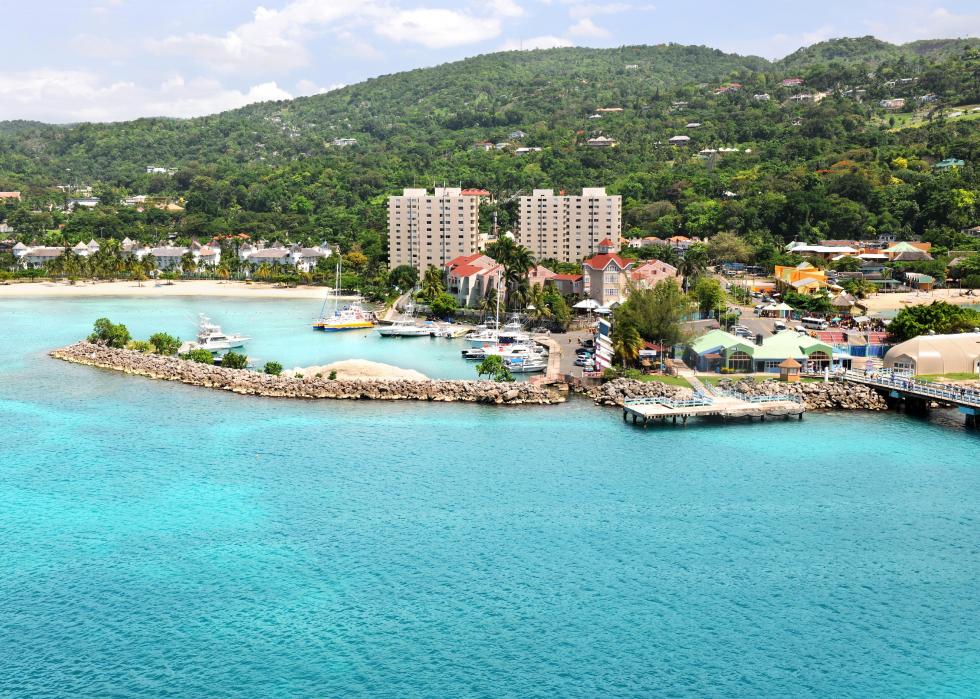
#13. Jamaica
- Tourism total contribution to GDP: $4.9 billion (33.7% of total GDP; 26.2% increase since 1998)
- Jobs reliant on tourism: 368,100 (30.5% of total jobs)
The Caribbean country of Jamaica is known for white-sand beaches and its reggae music, but also rivers, waterfalls, mountains, and plains. There are three main resort areas: Montego Bay, Negril, and Ocho Rios. The capital, Kingston, offers theater, music, and shopping.

#12. Iceland
- Tourism total contribution to GDP: $8.9 billion (35% of total GDP; 75.5% increase since 1998)
- Jobs reliant on tourism: 70,400 (36.6% of total jobs)
The usual attractions of Iceland gained a new one in 2021, when a volcano erupted in the Geldingadalur region of Iceland's Reykjanes Peninsula. It is about 25 miles from the capital city, Reykjavik. More typically visitors are enjoying the Northern Lights, geothermal spas, waterfall, and rides on the island’s distinctive Icelandic horses.
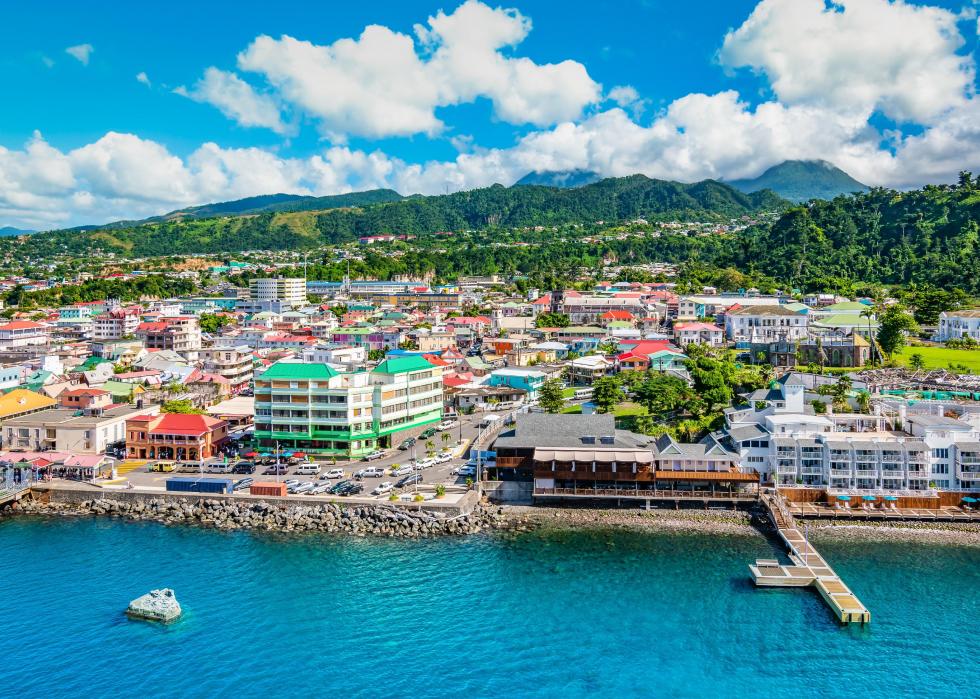
#11. Dominica
- Tourism total contribution to GDP: $199.9 million (37.6% of total GDP; 59.2% increase since 1998)
- Jobs reliant on tourism: 12,900 (34.5% of total jobs)
This Caribbean island is branding itself "the nature island," featuring its diving and snorkeling, hiking for all levels, rainforest spas, birding, fishing, and farm-to-table dining. There are three national parks, including Morne Trois Pitons, where Boiling Lake is believed to be the world's second-largest fumarole, or opening in the Earth's crust.

#10. Fiji
- Tourism total contribution to GDP: $2 billion (39.3% of total GDP; 28.1% increase since 1998)
- Jobs reliant on tourism: 117,200 (35.7% of total jobs)
Fiji is a South Pacific archipelago with more than 300 islands. On the water, visitors dive, surf, snorkel, kayak in the ocean, and raft on the river. There is hiking in the rainforests and visits to remote villages with overnight stays to get an understanding of Fiji culture. Fiji also has a large Indian community that celebrates Hindu festivals during the year.
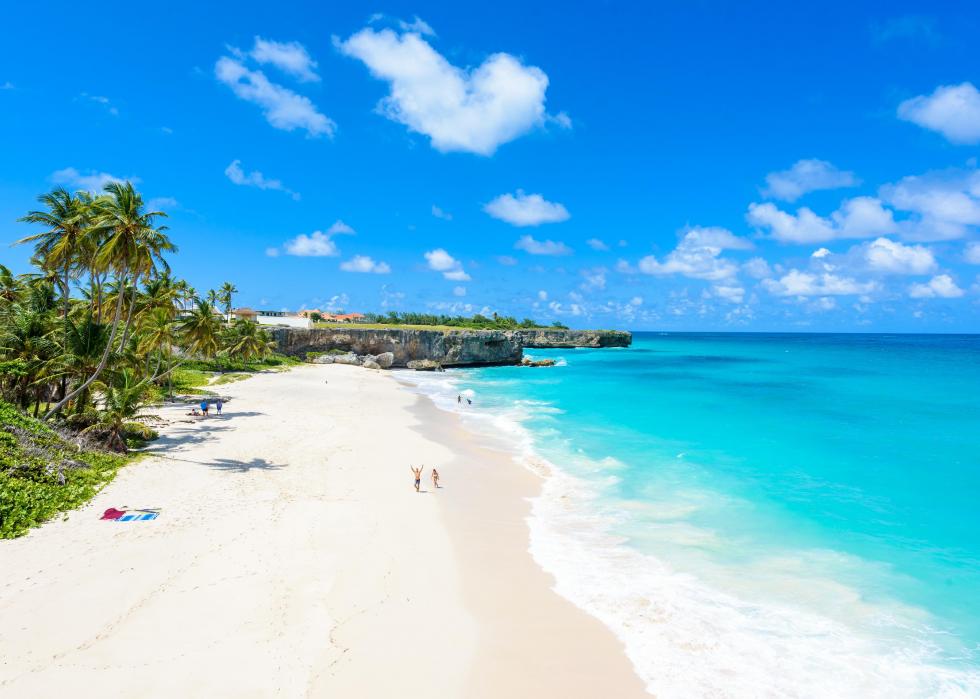
#9. Barbados
- Tourism total contribution to GDP: $2 billion (41.2% of total GDP; 9.5% increase since 1998)
- Jobs reliant on tourism: 54,000 (41.3% of total jobs)
Barbados has fine sandy beaches and surfing, gardens away from the coast, and lively nightlife. Its capital, Bridgetown, is a UNESCO World Heritage-listed site with more than 100 historic buildings, forts, and museums to visit.
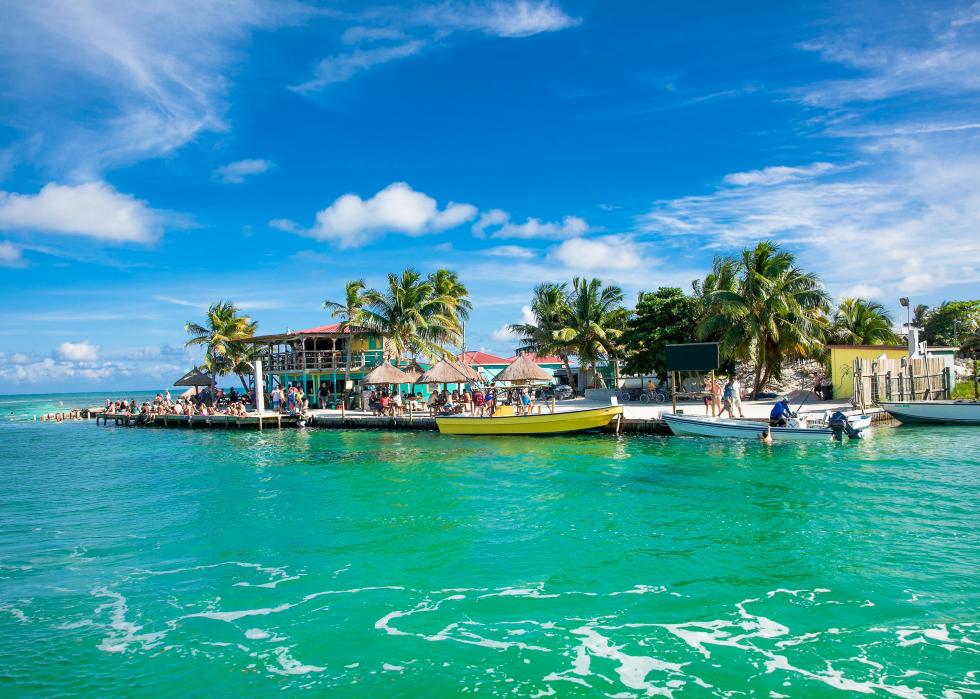
#8. Belize
- Tourism total contribution to GDP: $794 million (41.8% of total GDP; 81.7% increase since 1998)
- Jobs reliant on tourism: 61,400 (37.1% of total jobs)
In Belize, on the east coast of Central America, visitors can see the Mountain Pine Ridge Forest Reserve; the Lamanai, once a major Mayan city; the Belize Zoo; and Blue Hole, an underwater sinkhole off the coast. Belize has the second-largest barrier reef in the world, the largest being Australia’s.
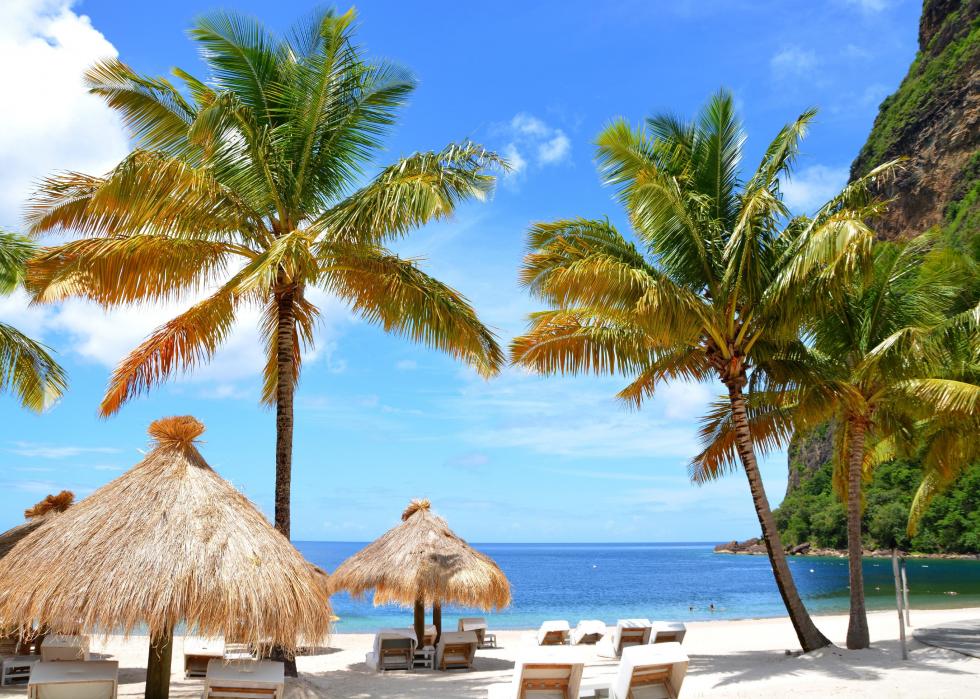
#7. St. Lucia
- Tourism total contribution to GDP: $654.2 million (43.3% of total GDP; 18.1% decrease since 1998)
- Jobs reliant on tourism: 40,300 (52.4% of total jobs)
An island in the Caribbean, St. Lucia is known for the Pitons mountains on its coast. There are white-sand beaches, diving, and festivals such as Jounen Kwéyòl or Creole Day, distinguished by feasts and music throughout the night. Saint Lucia Jazz and Arts Festival attracts top musicians.
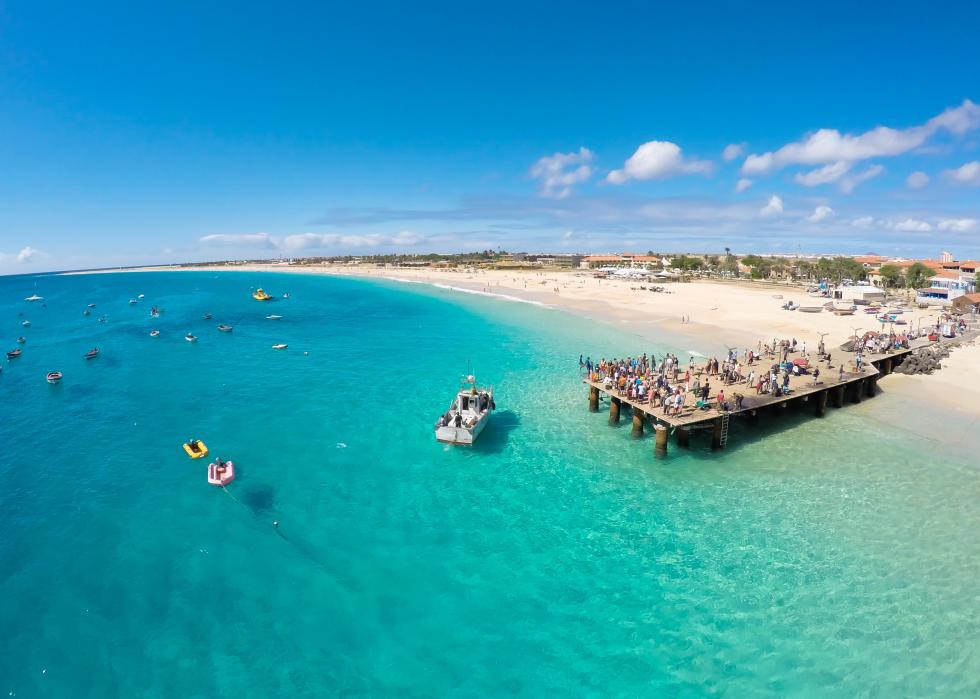
#6. Cabo Verde
- Tourism total contribution to GDP: $807.1 million (44.4% of total GDP; 235.5% increase since 1998)
- Jobs reliant on tourism: 95,400 (38.9% of total jobs)
Cabo Verde is a chain of islands west of Senegal in the Atlantic Ocean, a mix of beaches, high mountains, and volcanic landscapes. The highest peak is Pico do Fogo, which is still an active volcano. There are music clubs and bars and colonial architecture to see in Mindelo on São Vicente.
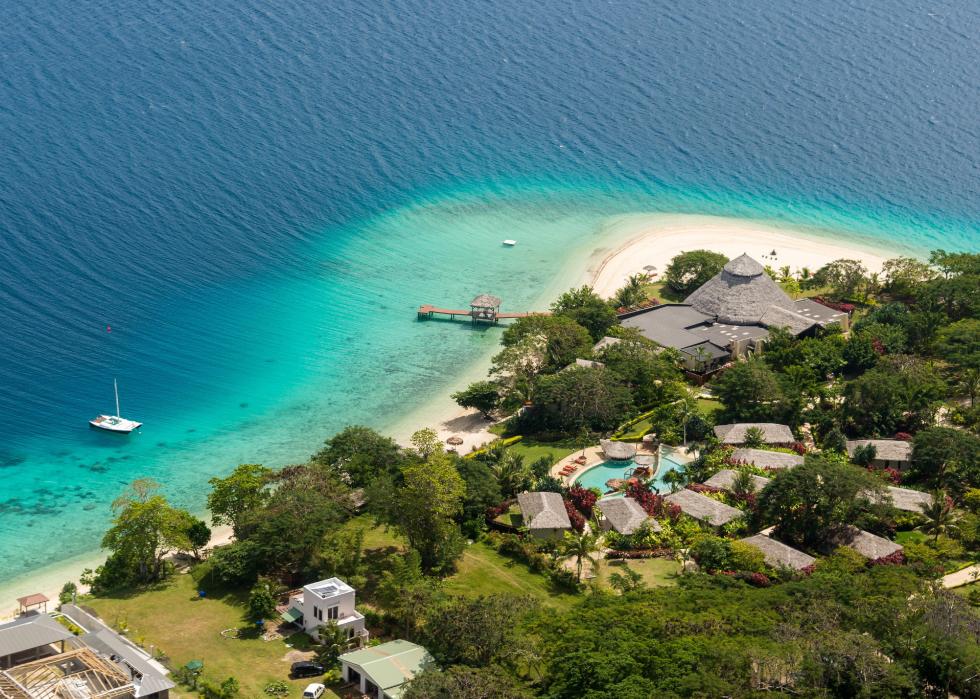
#5. Vanuatu
- Tourism total contribution to GDP: $380.4 million (45.9% of total GDP; 21.6% decrease since 1998)
- Jobs reliant on tourism: 30,800 (39.2% of total jobs)
Vanuatu is a country in the South Pacific with about 80 islands. Visitors can go scuba diving in the coral reefs and explore the SS President Coolidge, a World War II troopship that sank as it tried to pass through the Segond Channel, forcing its evacuation. Community tours demonstrate ancient ways of living, dances, and other cultural heritage.
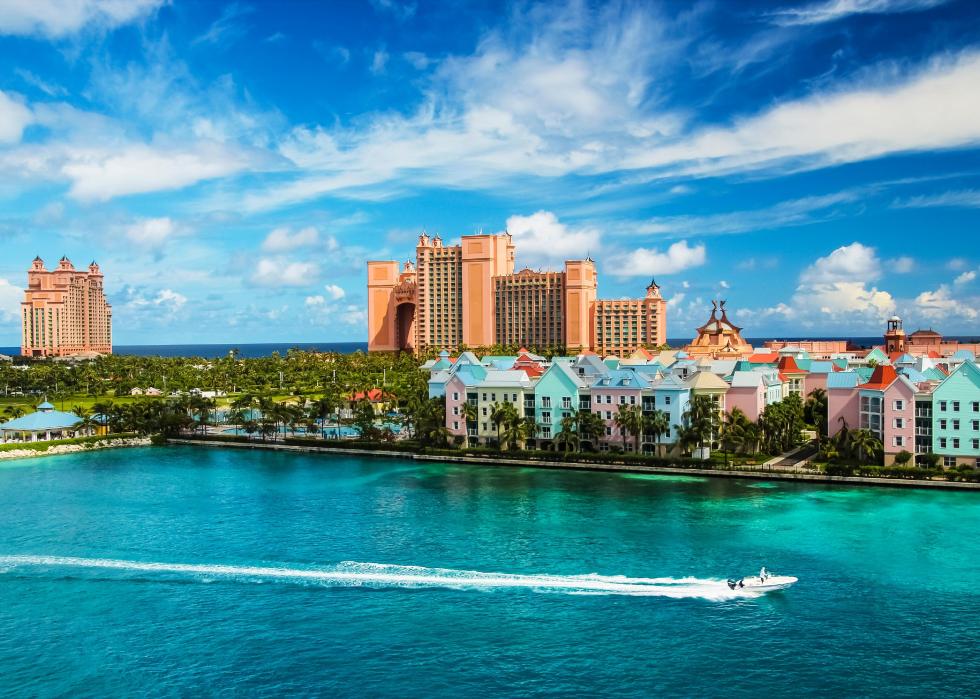
#4. The Bahamas
- Tourism total contribution to GDP: $4.5 billion (48.3% of total GDP; 4.4% increase since 1998)
- Jobs reliant on tourism: 114,900 (56.2% of total jobs)
The Bahamas comprises 16 major islands in the Atlantic Ocean. Tourists can choose between exploring the capital, Nassau, enjoying Paradise Island, swimming with the wild pigs on Big Major Cay, or visiting Eleuthera’s pink-sand beaches.

#3. Antigua and Barbuda
- Tourism total contribution to GDP: $806.1 million (52.4% of total GDP; 29.5% decrease since 1998)
- Jobs reliant on tourism: 17,000 (46.2% of total jobs)
The islands, former British colonies in the Caribbean, both have beautiful beaches. Antigua is the busier of the two and the capital, St. John’s, is a port for cruise ships. It offers museums and colonial buildings to tour. Barbuda has the well-known Frigate Bird Sanctuary.
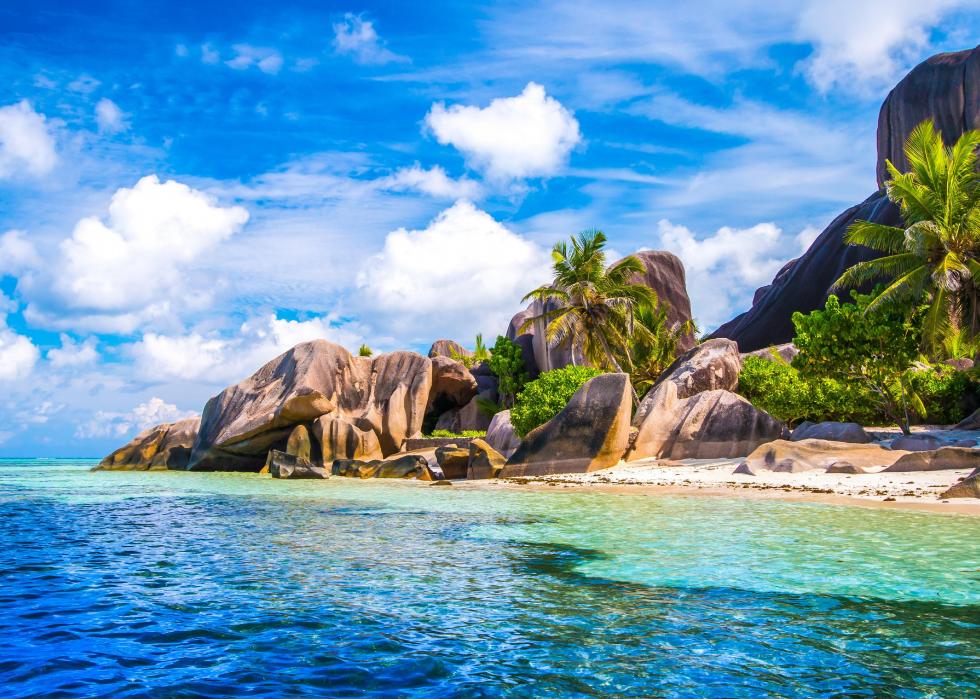
#2. Seychelles
- Tourism total contribution to GDP: $999.9 million (64.2% of total GDP; 13.5% increase since 1998)
- Jobs reliant on tourism: 29,700 (63.7% of total jobs)
An archipelago of 115 granite and coral islands off East Africa in the Indian Ocean, the Seychelles boasts beaches, nature preserves, and coral reefs, and nature reserves. Among the wildlife are the giant Aldabra tortoises. The capital, Victoria, is on Mahé, which also has the Morne Seychellois National Park.
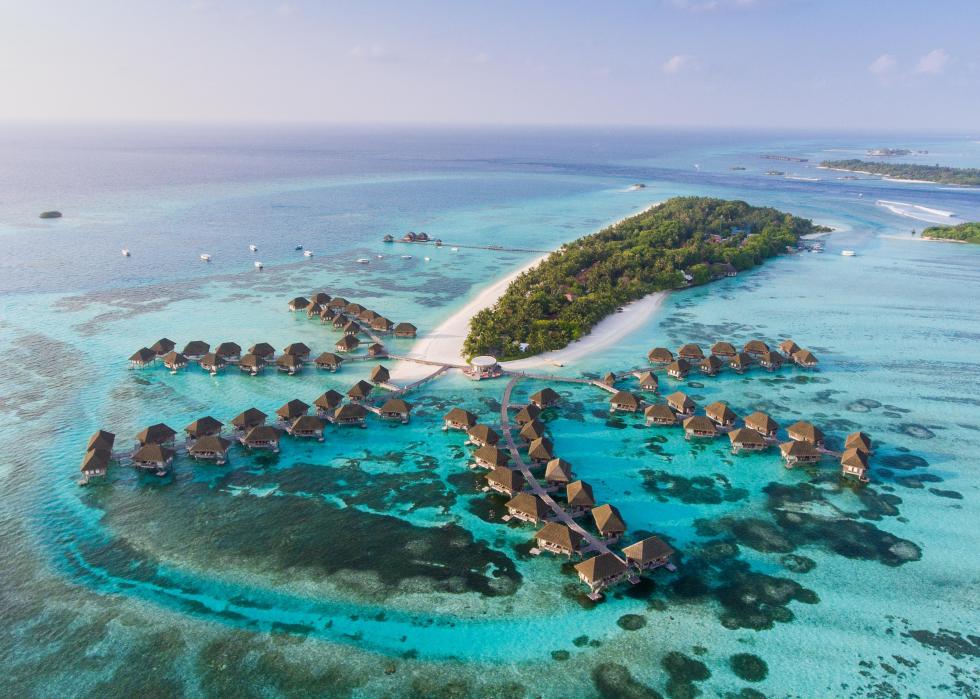
#1. Maldives
- Tourism total contribution to GDP: $3 billion (75.1% of total GDP; 44.2% increase since 1998)
- Jobs reliant on tourism: 80,400 (36.7% of total jobs)
The Maldives is made up of 1,200 islands in the Indian Ocean, among them atolls, coral reefs, and coral islands. Only about 200 of them are inhabited. Tourists visit beaches and the reef formations for which the Maldives is known, and can go kayaking, snorkeling, and picnicking on one of the uninhabited islands. But the Maldives also is disappearing under the rising water caused by climate change.



